





Advertising in the SEB magazine is a great opportunity to reach a large community of biologists.
For more details contact s.baba@sebiology.org
Design and artwork:
Studio Aelia hello@aelia.co.uk
P rinting and distribution:
Sterling Solutions
Sterling House Kettering Venture Park Kettering Northamptonshire
NN15 6XU
Tel: 0870 084 2100 sterlingsolutions.co.uk
C ontribute with an Article!
Interested in writing an article for the SEB magazine. Get in touch: s.baba@sebiology.org
Deadline for copy:
Issue: Spring 2019
Deadline: 31 December 2018
SEB Executive Team:
SEB Main Office Charles Darwin House 12 Roger Street London WC1N 2JU
Tel: +44 (0)20 7685 2600 admin@sebiology.org
C hief Executive Officer Pamela Mortimer (p.mortimer@sebiology.org)
E vents Manager Oliver Kingham (o.kingham@sebiology.org)
Head of Marketing, Communications and Member Engagement
Sabina Baba (s.baba@sebiology.org)
O ffice Administrator Julius Kelly (admin@sebiology.org)
C ommunications Assistant Conor Geoghegan (info@sebiology.org)
SEB Honorary Officers:
President Christine Raines (rainc@essex.ac.uk)
V ice President Craig Franklin (c.franklin@uq.edu.au)
T reasurer Martin Watson (martin.watson@durham.ac.uk)
P ublications Officer Martin Parry (martin.parry@bbsrc.ac.uk)
Plant Section Chair Katherine Denby (katherine.denby@york.ac.uk)
C ell Section Chair John Love (j.love@exeter.ac.uk)
A nimal Section Chair Lynne Sneddon (lsneddon@liverpool.ac.uk)
nterim SEB+ Section Chair Sue Broom (admin@sebiology.org)
SEB Journal Editors:
Journal of Experimental Botany Christine Raines (j.exp.bot@lancaster.ac.uk)
T he Plant Journal Lee Sweetlove (lee.sweetlove@plants.ox.ac.uk)
Plant Biotechnology Journal Henry Daniell (henry.daniell@ucf.edu)
C onservation Physiology
Steven Cooke (steven_cooke@carleton.ca)
Plant Direct Ivan Baxter (ibaxter@danforthcenter.org)
In association with ASPB
Di sclaimer
The views expressed in this magazine are not necessarily those of the Editorial Board or the Society for Experimental Biology.
T he Society for Experimental Biology is a registered charity No. 273795
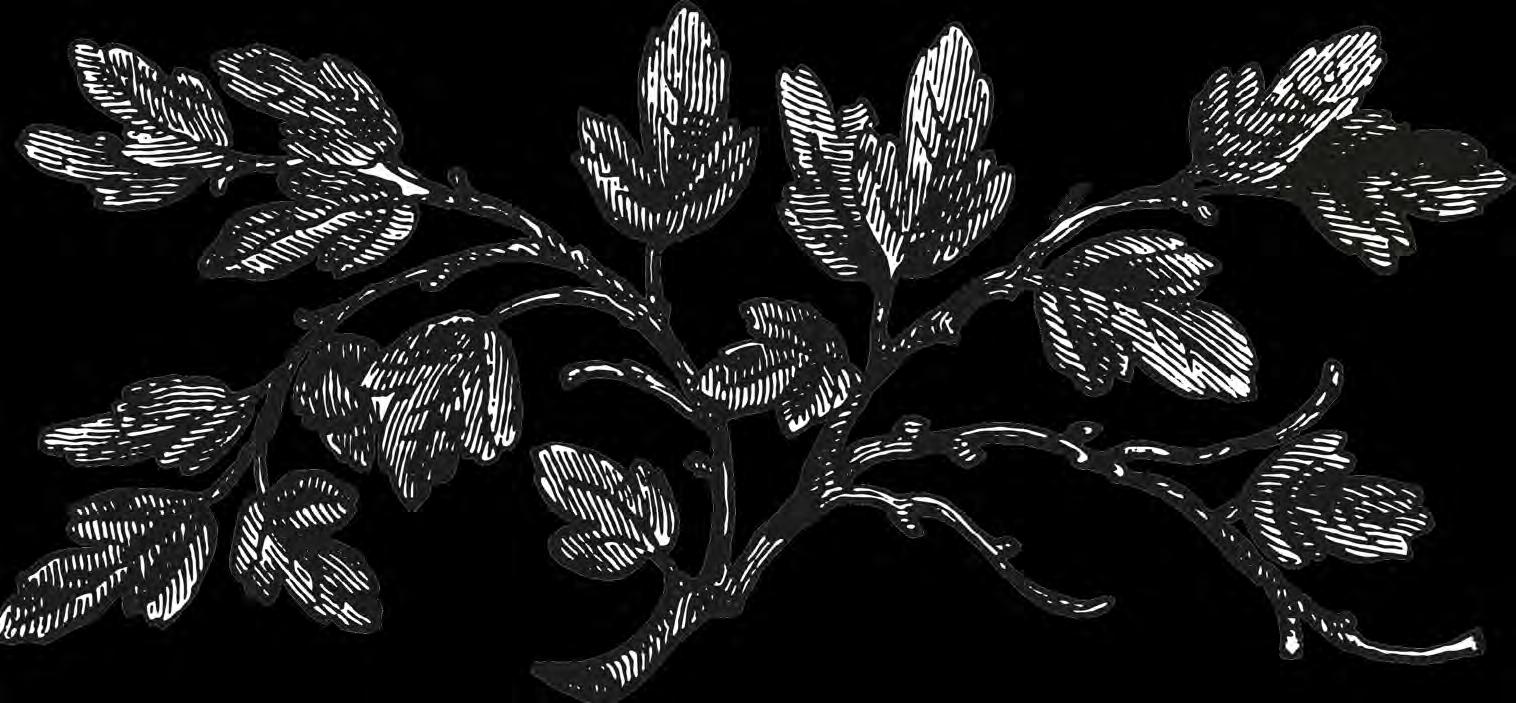
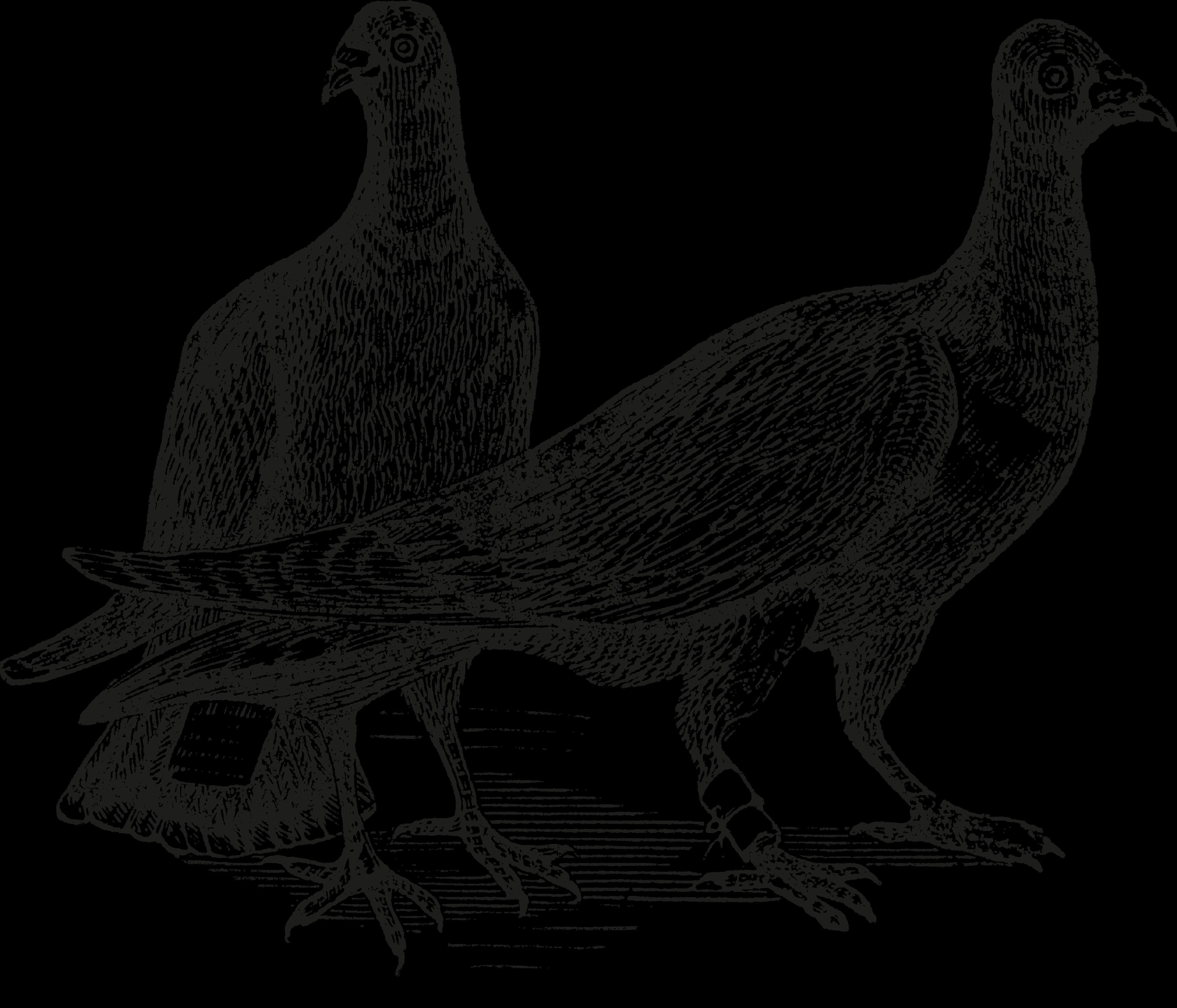
In today’s competitive work environment, most of us wish to stand out and make a name for ourselves in our field.
ut if you are anything like me, whenever a goal or skill is achieved, be it little or big, there’s not much time for pondering over your successes. You simply tend to move on to the next thing and focus on how much there’s still left to do.
Of course you submit your paper in journals and perhaps put out a press release but are you doing enough to promote your achievements or the skills that helped you reach your goals?
T here are many strategies for selfpromotion but one way to raise your profile and be an influencer in your field is to be a part of professional societies in your area of expertise – like the SEB. With an international membership of over 2500 biologists, we are a great platform for networking and making yourself known. But are you making the most of the career advancement opportunities we offer? Here are some of the things you can get involved in to enhance your career:
If you are looking to influence your field of research by showcasing a new angle or approach, or by getting researchers together to tackle a current issue, organising a meeting or a session at our Annual Meeting is the perfect way to do so.
T he symposia, satellite meetings and Annual Meeting sessions are organised by our members and we welcome proposals from all career stages.
For Early Career Researchers, the role of organiser gives you the opportunity to invite and network with eminent scientists in your field and helps raise your profile with your peers.
S o why not think about proposing a session for our upcoming Prague 2020 Annual Meeting? A call for proposals will go out to members late November 2018 and the deadline for submissions is 1 March 2019. To find out more, get in touch with us at proposals@sebiology.org.
You can also propose to write an article about your area of research or a current topic in science for our magazine or website. Or why not get in touch with us if you would like to be featured in an interview style article.
W hilst the Annual Meeting is a great platform for networking and presenting, submitting an article gives you exposure online and in print to over 2,500 readers. You can get involved by writing a review or opinion paper for one of our journals as well: www.sebiology.org/publications/journals
We often publish our members’ achievements and share these with the community. Whether you have been featured in the media, achieved an award, were successful in receiving a grant or had any other successes that you would like to share, get in touch with us on info@sebiology.org and we will publish your news.
Succeeding in your research projects draws on many abilities – for example you might have to develop new techniques for data collection or be creative with data sources or
funding sources.
W hy not share your experiences and knowledge on anything that helped you progress in your research and career with the SEB community by publishing an article about it?
Awards are a great way to get recognition for your work and to open new doors in your career. You should always keep an eye out for awards in your field and even better – why not make these a part of your career milestones by planning ahead which ones you would like to achieve in the future.
Here are the awards that you can apply for at the SEB: the Irene Manton Poster prize; the Young Scientist Award - open to early career scientists speaking at our conference; the President’s Medal – awarded to a young scientist of exceptional merit. Read all about our awards here: www.sebiology.org/about-seb/ honours-and-awards
In line with the theme of our magazine, we all feel the pressure of succeeding in our careers and to do so we have to be creative and take advantage all the opportunities that come our way.
I n planning your career, think about your “personal communications plan” to showcase achievements. And don’t forget to make the most of SEB and all the opportunities that are available through your membership.
ONE WAY TO RAISE YOUR PROFILE AND BE AN INFLUENCER IN YOUR FIELD IS TO BE A PART OF PROFESSIONAL SOCIETIES – LIKE THE SEB
For me the summer of 2018 was filled with travel, attending a number of meetings, not least of all, our own Annual Meeting in Florence. I hope you all enjoyed the excellent array of scientific presentations and the social events. I would like to thank the SEB team for the great organisation and smooth running of the meeting, all of the speakers andof course - our attendees.
At all the meetings I attended, a major theme in plant sciences was the rapid development of CRISPR/Cas9 for gene editing. This technology is advancing at pace and provides approaches to introduce novel traits into crops, providing a new hope for achieving rapid improvements in yield, as well as resistance to biotic and abiotic stress. However, a major decision taken this summer by the EU court is that plants (or animals) produced using the new technologies of gene editing will be classified as genetically modified and therefore will be subject to stringent regulations. This negative focus on technologies is very disappointing, particularly given that it is not based on any evidence that novel traits introduced using genome engineering pose any additional threat to health or the environment, when compared to more conventional breeding approaches. This is a significant and detrimental step that will have repercussions for the Biotechnology industry across Europe and beyond. What can we do as scientists to counter the often illinformed views held on these new technologies?
It is a challenge but it is important that as scientists we maintain a balanced view and base any arguments in fact. We should not hide from opportunities to discuss the new technologies and the potential benefits, at the same time as realising that these approaches will not solve all the issues faced by agriculture and that any newly introduced traits do need to be subject to rigorous testing, regardless of the methods used to produce them.

O n a different topic Open Access has been a live debate for a number of years and is gathering pace, with many Universities in Europe cancelling subscriptions to major publishers - and some now discussing the development of their own publishing platforms. A recent article highlights plans by the European Commission and the European Research Council to make it mandatory for the recipients of their funding to publish the resulting outcomes in open access1. The aim of open access is to allow the findings from research to be shared rapidly and widely, free of charge and thereby to increase understanding and enable use of the most recent findings by government, business and the public. Although there has been a steady growth in open access journals in which the author pays to publish, it would be wrong to think that this is the only
model. Most conventional journals also have open access options. The relevance of this debate to SEB is that we have five journals, three of which use a full author pay open access model and two have a mixed approach. Any profit arising from our journals is used to support our charitable activities – which sets Society journals apart from those that operate solely for the benefit of the owners. As a Society we are in support of the open access principles and as our strategic review gets underway this topic will be high on our agenda.
A s we head towards the winter months, plans for Seville 2019 are well underway, so do check out the website and save the dates!
The sessions are already up and it promises to be another exciting year for hearing the latest results from research in experimental biology!
1. h ttps://www.frontiersin.org/articles/10.3389/ fnins.2018.00656/full?utm_source=AD&utm_ medium=TW&utm_campaign=CORP_PLANS_20180904
AS A SOCIETY WE ARE IN SUPPORT OF THE OPEN ACCESS PRINCIPLES AND AS OUR STRATEGIC REVIEW GETS UNDERWAY THIS TOPIC WILL BE HIGH ON OUR AGENDA.
Left Christine Raines
Photo credit: Gary Manhine
The SEB is sad to say goodbye to our Office Administrator Esen Celepi. Esen started working at the SEB in September 2015 and has been a popular and integral member of the SEB team. The SEB would like to extend its warmest thanks to Esen for her contribution to the Society over almost 3 years. Her commitment and hard work as well as her cheerful manner will be missed and we wish her the best as she begins her new adventure with a move to Vancouver, Canada.

Julius joined the Society for Experimental Biology on 20 th August in the position of Office Administrator. He has previously spent over 7 years working in membership organisations. Before his career in membership services, Julius had several assignments as a Personal Assistant to senior executives and lived and worked abroad.
Julius is a Fine Arts graduate of the University of Manchester (Sotheby’s Institute of Art) and maintains a very keen interest in all the arts, particularly 19 th & 20 th Century drawings. He is a long-time member of The Royal Academy of Art and the Tate Museums. His other interests include travel both in and around the UK and abroad and collecting books.
We would like to wish him a warm welcome to the SEB team!

The SEB would like to extend its congratulations to SEB funded PhD student Esther Odekunle who has recently submitted her PhD thesis at Queen Mary University, London. Esther’s research project has focussed on investigating the vasopressin/oxytocin (VP/OT)-type neuropeptide signalling system primarily in the starfish Asterias rubens. Here she has identified an evolutionarily ancient role of the starfish VP/OT-type system in the regulation of feeding behaviour.
T hroughout her PhD, Esther has played an active role within the SEB as the postgraduate representative within the SEB+ committee. In addition to this, she has presented and organised sessions at multiple SEB Annual Meetings and has also assisted the SEB in the area of science communication which included writing an SEB magazine article on the ‘Evidence Matters EU’ event held at the European Parliament last year. Esther is currently considering a variety of career options including scientific research and science communication. We wish her success in everything she sets out to do!
The SEB would like to make our members aware of the following changes within our special interest groups.
The SEB welcomes Johannes Overgaard (University of Aarhus, Denmark) as the new convenor for the Animal Section’s Thermobiology Group. Johannes’ research is generally focused on how animals have adapted to handle variability and extremes in environmental factors such as temperature, water- and food availability. Johannes takes over as convenor from Holly Shiels (University of Manchester, UK). The Society would like to extend its warmest of thanks to Holly for her contribution to both the Thermobiology group and the Animal Section.
Øyvind Øverli (Norwegian University of Life Sciences, Norway) has taken over from current Section Chair Lynne Sneddon as the convenor for the Neurobiology Group . Øyvind’s research explores neuroimmune crosstalk and the role of parasites and pathogens as selective agents in the evolution of animal personalities and coping styles.
Felix Mark (Alfred Wegener Institute, Germany) has taken over from current SEB Vice-President Craig Franklin in the role of Conservation Physiology Group Convenor Felix’s research focuses on integrative ecophysiology of marine ectotherms, in which he combines molecular and organismic approaches to investigate an organism’s response and adaptation towards ecological and environmental challenges.
We would also like to welcome the following members that have taken up deputy convenor roles within the Animal Section:
– Neurobiology: Ida Johansen (Norwegian University of Life Sciences, Norway)
– Biomechanics: Graham Askew (University of Leeds, UK)
– Ecophysiology: Stefano Marras (Italian National Research Council, Italy)
– Comparative Endocrinology: Jenni Prokkola (University of Liverpool, UK)
– A nimal Respiration: Gina Galli (University of Manchester, UK)
Matthew Terry (University of Southampton, UK) has stepped down as Convenor for the Plant Development Group. Matthew has been a member of the SEB for over 10 years and has played an integral role in the Plant Section.
The SEB would like to thank Matthew for his extensive contribution to the Plant Section and the Society during his time as Convenor for the Plant Development Group.
We would also like to welcome the following members that have taken up roles as Deputy Convenors in the Plant Section:
– P lant Biotechnology and Synthetic Biology: Piers Hemsley (University of Dundee, UK)
– PEPG : Tracy Lawson (University of Essex, UK)
– A biotic Stress and Climate Change: Zoe Wilson (University of Nottingham, UK)
– I nteraction of Plants with Other Organisms: Sharon Zytynska (Technical University of Munich, Germany)
The SEB is pleased to announce its support of a new curriculum for the use of research animals. Developed by the British Pharmacological Society and supported by a range of life sciences organisations, the new curriculum aims to support the next generation of researchers in gaining the education, skills and understanding of animal welfare needed to carry out these vital studies. The curriculum has been designed to:
– help students understand when research requires the use of animals, and when it does not
– provide education in the skills needed to interpret and critique reported data obtained from research animals
– share good practice on how to design animal experiments and to integrate animal welfare as part of that process
– foster openness about the use of research animals
The curriculum is available at: https://www.bps. ac.uk/education-engagement/research-animals/ curriculum-for-the-use-of-research-animals

The SEB are pleased to announce that Conservation Physiology Journal has received a second impact factor of 3.460 This sees an increase from the previous impact factor of 2.323. The SEB would like to extend its congratulations to the authors, referees, and editorial team for this fantastic result.
We would also like to inform you of the 2018 impact factors received by our other journals.
The Plant Journal has received an impact factor of 5.775, Plant Biotechnology Journal of 6.305 and the Journal of Experimental Botany of 5.354. The SEB would also like to congratulate Editor in Chief Ivan Baxter and the rest of the editorial team at Plant Direct Journal on a successful first year of publication.
Don’t forget that SEB members receive discounts on selected SEB published journals.
For more information about our journals visit: http://www.sebiology.org/publications/journals
Couldn’t make it to SEB Florence 2018? Well you can still catch all of the Annual Meeting Plenary Lectures on the SEB YouTube channel!
The 2018 plenary lectures were:
– C aroline Dean (John Innes Centre, UK) – Sensing and remembering winter
– Hans-Otto Pörtner (Alfred Wegener Institute, Germany) – What role for experimental biology in climate-related assessment reports?
– Malcolm Bennett (University of Nottingham, UK) - Branching out: Linking lateral root development with environmental signals
Watch them online here: https://www.youtube. com/channel/UCnxqUMNr8pM-A5CknEERJAA
The SEB Council is currently revising the Society’s strategic plan for the upcoming 5 years, 2018 to 2023. The Council is keen to involve the membership as it considers how best to develop and improve the SEB.
If you have a suggestion or idea you believe should be considered during the development of the new strategic plan, we would love to hear from you. Please send your suggestions to proposals@sebiology.org.
The Council will be holding a session in November 2019 to agree the new Strategic Plan and further updates will be provided via the SEB website, magazine and newsletter.
A copy of the 2013 – 2018 SEB Strategic Plan is available on the SEB website: http:// www.sebiology.org/docs/default-source/sebgovernance/strategic_plan_2013_to_2018.pdfI
If you have a suggestion or idea you believe should be considered during the development of the new strategic plan we would love to hear from you. Please send your suggestions to proposals@sebiology.org.

n each issue of the member magazine, we like to highlight some of the fantastic achievements and research from our members. Here are the people we would like to highlight this time around.
The root apical meristem with the stem cells of the root tissues is protected by a root cap which is shed at regular intervals. In Arabidopsis thaliana the cap at the root tip, distal to the stem cells, consists of an inner core of 4-5 layers of gravity-sensing columella cells surrounded by lateral root cap cell files.
I n the August issue of Nature Plants, the Aalen group at the University of Oslo, and collaborating labs, document for the first time the sloughing process with live imaging over three days. Sloughing of root cap layers requires breakdown of cell walls and resembles in that respect other cell separation processes like floral organ abscission. However, root cap sloughing is a recurrent event in the same organ. Hence, the challenge is to compensate for each lost root cap layer by generation of a new, and to detach the oldest layer when a new one has been formed. Therefore loss and generation of root cap layers must be tightly coordinated to maintain the size of the cap.
T he paper by Shi et al, presents a novel signalling pair, the peptide IDA-LIKE1 (IDL1) and its receptor HEASA-LIKE2 (HSL2), which can provide the tight communication needed. The HSL2 leucine-rich receptor-like kinase has previously been shown to be the receptor of IDA (INFLORESCENCE DEFICIENT IN ABSCISSION) closely related to IDL1. IDAHAE/HSL2 controls floral organ abscission and facilitates emergence of lateral roots though the overlaying layers. Shi et al show that enhanced expression of IDL1 in the separating layers increased the frequency of sloughing by 50%, and that this loss was compensated by generation of new layers in a HSL2-dependent manner. Mutations in either IDL1 or HSL2 slowed down cell division, maturation and separation, and suggested involvement of programmed cell death in initiation of sloughing events.
I n conclusion, IDL1-HSL2 signalling potentiates dynamic regulation of the homeostatic balance between stem cell division and sloughing activity.
You can read the full paper online here: https://www.nature.com/articles/s41477-0180212-z
Dr Timothy Clark has received a prestigious Future Fellowships grant from the Australian Research Council to undertake a fouryear project which aims to uncover the mechanisms behind the temperature-size rule, a phenomenon causing fishes and other aquatic organisms to decline in size as the climate warms. The scheme, which will see Dr Clark receive (AUD) $850,000 in funding, identifies projects which the Australian Research Council considers of critical national importance and aims to attract and retain the best and brightest mid-career researchers. Dr Clark’s project will draw upon multidisciplinary expertise to test three competing theories and expects to develop improved models to forecast the effects of global warming on fish and fisheries. This new knowledge and predictive power should be of direct benefit to natural resource managers in the continuing effort to mitigate the negative impacts of climate change.
T his topic will also be explored in the upcoming SEB Seville 2019 Animal Biology Satellite Meeting ‘Is global warming causing animals to shrink? Evidence, mechanisms and models’ for which Dr Clark is an organiser. More information on the meeting can be found at: www.sebiology.org/events

SEB member Dr Madeline Mitchell is part of a team of CSIRO scientists creating enhanced cotton fibres with properties that are currently only available in synthetics, such as being stretchy, non-creasing and even waterproof, while retaining a natural fibre feel. The team is looking into the structure of cotton cell walls and harnessing the latest tools in synthetic biology to develop the next generation cotton fibre.
T he use of cotton, which is a natural renewable fibre, also provides a more environmentally friendly alternative to synthetics. When synthetics like polyester and nylon are washed, thousands of tiny microfibers of material are pulled free and enter our waterways. These are not biodegradable and can build up in the food chain. When you wash cotton, fibres are also shed but these are biodegradable and break down naturally in the environment. Australian cotton is also the most water efficient in the world.
It is hoped that the development of new cotton with non-creasing and stretchy properties


SEB Vice-President Professor Craig Franklin has been recognised at the recent University of Queensland (UQ) 2018 Research Week Awards where he received the Partners in Research Excellence Award for the science field. The award recognises outstanding industry-UQ collaborations that have benefitted industry and the community.
rofessor Franklin received the honour for his research work in collaboration with . The research project, which is the largest and longest tracking study of its kind, focuses on Estuarine Crocodiles in Northern Australia. Craig and his team use satellite tracking devices and acoustic transmitters in order to collect long term data on the behaviour, physiology and ecology of the crocodiles.
Over the past ten years, Craig and his team have collected over 10 million pieces of data relating to body temperature and location of Estuarine Crocodiles. his data gives researchers the ability to gain a better understanding of the ecological role these crocodiles and provides valuable insight into the effect of global warming on
ou can find out more about the award
https://www.uq.edu.au/ news/article/2018/09/awards-celebrateuq%E2%80%99s-research-stars
SOCIETY FOR EXPERIMENTAL BIOLOGY IS GLOBAL WARMING CAUSING ANIMALS TO SHRINK?
EVIDENCE, MECHANISMS AND MODELS
30 JUNE 2019 SEVILLE, SPAIN
SEBIOLOGY.ORG #SEBSHRINK
Crop research is undergoing a renaissance helped by the emergence of the Cas9-mediated genome editing technology. Dr Simon Bull and his colleagues have coupled this technology with accelerated flowering to help improve cassava ( Manihot esculenta Crantz). Cassava is grown for its starch-rich storage roots that serve as a staple food for more than 600 million people, especially in Africa, and also processed for industry. Despite its provenance amongst the staple crops, cassava breeding has been hampered by a highly heterozygous genome, variable flowering and poor seed production. To help tackle these problems, Dr Bull successfully demonstrated Cas9-mediated targeted mutagenesis of two genes involved in starch biosynthesis (PROTEIN TARGETING TO STARCH or GRANULE BOUND STARCH SYNTHASE) to produce a favourable trait. Additionally, integration of the FLOWERING LOCUS T (FT) gene from Arabidopsis triggered blooming – an event seldom seen in glasshousegrown cassava. This allowed Dr Bull and his team to manually pollinate flowers to produce fertile seeds. The progeny had inherited the modified starch genes and through natural segregation some had also lost the foreign Cas9/FT gene cassette. This new plant breeding technique (NPBT) significantly speeds up production of cassava lines with specific traits. Dr Bull hopes that transfer of this NPBT could empower local researchers, breeders and farmers in the Global South, allowing improvement of farmer-preferred cultivars and integration with local programmes.
D r Simon Bull was supported by a PLANT FELLOWS postdoctoral fellowship.
T he open-access paper and linked media articles are available online: http://advances. sciencemag.org/content/4/9/eaat6086
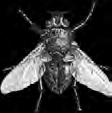
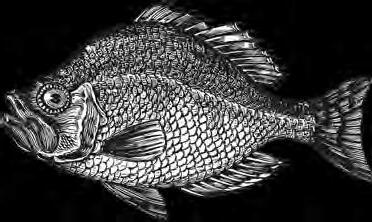
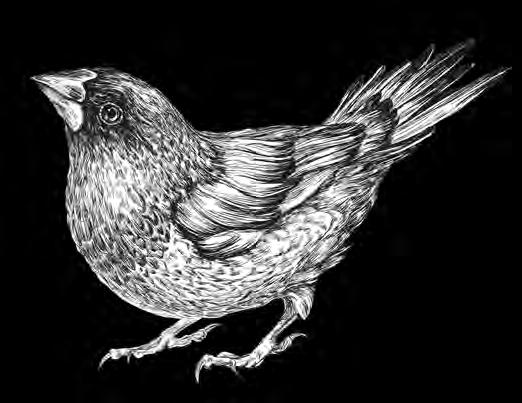
ORGANISED BY
• SJANNIE LEFEVRE (UNIVERSITY OF OSLO, NORWAY)
• TIMOTHY CLARK (DEAKIN UNIVERSITY, AUSTRALIA)
• FREDRIK JUTFELT (NORWEGIAN UNIVERSITY OF SCIENCE AND TECHNOLOGY, NORWAY)
• DAVID MCKENZIE (CNRS, FRANCE)
INVITED SPEAKERS
• DAVID ATKINSON (UNIVERSITY OF LIVERPOOL, UK)
• DANIEL PAULY (UNIVERSITY OF BRITISH COLUMBIA, CANADA)
• SJANNIE LEFEVRE (UNIVERSITY OF OSLO, NORWAY)
• FELISA SMITH (UNIVERSITY OF NEW MEXICO, USA)
• JANET GARDNER (THE AUSTRALIAN NATIONAL UNIVERSITY, AUSTRALIA)
• JENNIFER SHERIDAN (CARNEGIE MUSEUM OF NATURAL HISTORY, USA)
• ASTA AUDZIJONYTE (UNIVERSITY OF TASMANIA, AUSTRALIA)
Different love stories that lead to the formation of seeds reunited some experienced researchers, PhD students, early career researchers and academics from all over the world to share their common passion for plant reproduction at the SEB plant satellite meeting “Advances in Plant Reproduction –From Gametes to Seeds” in Florence, Italy this summer.
Prof. Sílvia Coimbra (University of Porto) from the Organising Committee welcomed all the participants highlighting the importance of “understanding the factors regulating plant reproduction, a complex biological process, to improve agricultural productivity”. Here’s an overview of these two days.
mechanism underlying the female germline isolation during the ovule development. Using specific marker lines, he found out that the symplastic protein transport is blocked and therefore the germline is isolated. His results led to the following question: “What is the MMC trying to keep out… or in?”.

In angiosperms, the female gametophyte development occurs within the ovule where a diploid megaspore mother cell (MMC) undergoes meiosis and gives rise to four haploid megaspores1. Only one of these megaspores will become the functional megaspore which will form the embryo sac. The first session of the meeting “Ovule Development - Germline Development and Function” started with Prof. Lucia Colombo (University of Milan, Italy) talking about the development of the ovule, the “extremely complex and extraordinary organ that upon double fertilization develops into seeds”, she said. Lucia detailed the importance of the auxin responsive factor MONOPTEROS and its network during ovule development. Afterwards, Prof. Matthew Tucker (University of Adelaide, Australia) used a quote from Gandalf’s character in the movie Lord of the Rings: The Fellowship of the Ring: “You shall not pass” to explain the
During double fertilization, when a mature pollen grain is released from an anther and reaches the pistil, it adheres to the stigmatic cells and hydration begins, leading to the germination of the pollen into a pollen tube2 . The pollen tube grows along the female tissues carrying the two sperm cells into the embryo sac. Then, the pollen tube enters one of the synergids releasing the sperm cells, the receptive synergid degenerates, double fertilization takes place and the persistent synergid is eliminated. We took a step in the theme “Pollen Germination and Pollen Tube GrowthFertilization and Polyspermy Block” with Prof. José Feijó (University of Maryland, USA) who highlighted the importance of glutamate receptor-like (GLRs) channels in plants. José showed that a mutation of GLR genes in Physcomitrella patens leads to sperm failure in targeting the female reproductive
organs3 As GLR genes encode non-selective Ca 2+ permeable channels that can regulate cytoplasmic Ca2+ and they are involved in sperm chemotaxis, he suggested that GLRs may have a conserved role in male gamete signal perception.
Later, we heard from Dr. Marta Mendes (University of Milan) about how cytokinins play a role in synergid cell death in Arabidopsis Marta presented two targets of the SEEDSTICK transcription factor that interact to control the death of the receptive synergid cell: VERDANDI (VDD) and VALKYRIE (VAL), both named after two Norse goddesses who determined the fate of men4. She explained how VDD and VAL form a complex that controls the expression of the cytokines oxidase/ dehydrogenase CKX7 and she discussed how the correct maintenance of cytokinin levels is required for the receptive synergid death. We also learned about a love story that “can’t get no satisfaction” with Dr. Ana Marta Pereira (University of Milan) who talked about JAGGER, an arabinogalactan protein named after the rock’n’roll god Mick Jagger. JAGGER is an important molecule involved in the mechanism responsible for preventing polyspermy in Arabidopsis 5. In jagger mutant, “the persistent synergid does not degenerate after double fertilization and continues to attract more pollen tubes into the embryo sac”, explained Ana Marta. Later, Prof. Sílvia Coimbra highlighted the importance of the role of arabinogalactan proteins (AGPs) and Ca2+ in pollen tube growth and guidance. Sílvia performed a pollen tube transcriptome of a double mutant of two pollen-specific AGPs, AGP6 and AGP11. She verified that the expression levels of calciumand signalling-related genes were altered, thus supporting the role of AGPs in pollen tube growth regulated by a calcium gradient6 Sílvia also presented us a regulatory triple role of AGPs as: a primary source of cytosolic Ca2+ , a plasticizer of wall pectin and Ca2+ signposts to the ovule7.
When double fertilization takes place, one sperm cell fertilizes the egg cell, giving rise to the embryo and the second sperm cell fuses with the diploid central cell, giving rise to the triploid endosperm, which surrounds and provides nutrients to the developing embryo2 . In the last session “Embryogenesis and Endosperm Development - Seed and Fruit Development”, we stayed “stick” with PhD student Ana Lopes’ (University of Porto) presentation about the SEEDSTICK (STK) transcription factor control frame. Mature seeds of stk mutant do not detach from the mother plant siliques, they stay “stick”. Furthermore, STK is expressed in the
integument tissues and funiculus of developing seeds, indicating that STK plays a role during seed development8 RNA and ChIP sequencing data results (stk vs wt) identified several direct targets of STK, such as arabinogalactan proteins and cytokinin oxidase/dehydrogenase genes. The purpose of Ana’s work is to understand the role of these molecules and their network during seed development.
P rof. Emidio Albertini (University of Perugia, Italy) presented us the “APOSTART: a candidate gene involved in embryo and parthenogenesis”. Apomixis, a naturally occurring mode of asexual reproduction in flowering plants, avoids both meiotic reduction and egg fertilization 9 and seed derived progenies are genetically identical to the maternal parent. Emidio isolated APOSTART in Poa pratensis and started characterising the Arabidopsis APOSTART members.
D uarte Figueiredo, junior group leader at the University of Potsdam in Germany, then presented us with some interesting evidence that “auxin regulates endosperm cellularization in Arabidopsis”. In Arabidopsis, the endosperm is initially developed as a syncytium, where nuclear divisions are not followed by cytokinesis and after a defined number of nuclear divisions it cellularizes10 During his talk, Duarte exposed that reduced auxin can restore cellularization in triploid seeds and therefore it can rescue the triploid seed abortion, highlighting a “causal role of increased auxin biosynthesis in preventing endosperm cellularization”. With these results, he proposed that auxin determines the time of endosperm cellularization.
Buzi Raviv (PhD student at Ben Gurion University, Israel) provided a detailed look on the function of seed covering structures. He proposed that dead maternally derived organs enclosing embryos function not only as a physical shield for embryo protection from mechanical stress and microorganism invasion but also as long-term storage for multiple active hydrolases (such as nucleases, proteases and chitinases) that are released upon hydration and that aid in seed persistence and longevity, germination and seedling establishment11 These results explain how seeds persist and
retain viability in the soil for so many years.
T hen, Prof. Simona Masiero (University of Milan) enlightened us with a “fruit-talk”. Agricultural production relies on the “yield and quality factors associated with fruits” and therefore it is very important to understand the mechanisms controlling fruit development and maturation. Simona’s group performed a “transcriptome analysis by RNA-deepsequencing covering all the phases of silique development and maturation” to identify genes involved in fruit development and maturation in Arabidopsis thaliana NAC transcription factors appeared in this analysis and they seem to be involved in the homeostasis of gibberellins and other hormones.
T hroughout the two days meeting, the participants were able to appreciate custom Italian food while taking a look at the researcher’s posters showing their ongoing studies. To end this event in great shape there was a Port Wine tasting provided by the Portuguese organising team of the meeting (Sílvia Coimbra, Ana Lúcia Lopes and Ana Marta Pereira). Looking back, the event was a success and all there is left to say is: until the next plant satellite meeting!
1. Reiser, L., & Fischer, R. L. (1993). The ovule and the embryo sac. The Plant Cell, 5(10), 1291.
2. Pereira AM, Lopes AL and Coimbra S (2016) Arabinogalactan Proteins as Interactors along the Crosstalk between the Pollen Tube and the Female Tissues. Front. Plant Sci. 7:1895.
3. O rtiz-Ramírez, C., Michard, E., Simon, A. A., Damineli, D. S., Hernández-Coronado, M., Becker, J. D., & Feijó, J. A. (2017).
GLUTAMATE RECEPTOR-LIKE channels are essential for chemotaxis and reproduction in mosses. Nature, 549(7670), 91.
4. Mendes, M. A., Guerra, R. F., Castelnovo, B., Velazquez, Y. S., Morandini, P., Manrique, S., ... & Colombo, L. (2016). Live and let die: a REM complex promotes fertilization through synergid cell death in Arabidopsis. Development, dev-134916.
5. Pereira, A. M., Nobre, M. S., Pinto, S. C., Lopes, A. L., Costa, M. L., Masiero, S., & Coimbra, S. (2016). “Love Is Strong, and You’re so Sweet”: JAGGER is essential for persistent synergid degeneration and polytubey block in Arabidopsis thaliana Molecular plant, 9(4), 601-614.
6. Costa, M., Nobre, M. S., Becker, J. D., Masiero, S., Amorim, M. I., Pereira, L. G., & Coimbra, S. (2013). Expression-based and co-localization detection of arabinogalactan protein 6 and arabinogalactan protein 11 interactors in Arabidopsis pollen and pollen tubes. BMC plant biology, 13(1), 7.
7. L amport, D. T., Tan, L., Held, M. A., & Kieliszewski, M. J. (2018). Pollen tube growth and guidance: Occam’s razor sharpened on a molecular arabinogalactan glycoprotein Rosetta Stone. New Phytologist, 217(2), 491-500.
8. M izzotti, C., Ezquer, I., Paolo, D., Rueda-Romero, P., Guerra, R. F., Battaglia, R., ... & Colombo, L. (2014). SEEDSTICK is a master regulator of development and metabolism in the Arabidopsis seed coat. PLoS genetics, 10(12), e1004856.
9. A lbertini, E., Marconi, G., Reale, L., Barcaccia, G., Porceddu, A., Ferranti, F., & Falcinelli, M. (2005). SERK and APOSTART. Candidate genes for apomixis in Poa pratensis. Plant Physiology, 138(4), 2185-2199.
10. Figueiredo, D. D., Batista, R. A., & Kohler, C. (2018). Auxin regulates endosperm cellularization in Arabidopsis. bioRxiv, 239301
11. R aviv, B., Aghajanyan, L., Granot, G., Makover, V., Frenkel, O., Gutterman, Y., & Grafi, G. (2017). The dead seed coat functions as a long-term storage for active hydrolytic enzymes. PloS one, 12(7), e0181102.
Left Jessy Silva
Turn up the heat on your scientific experiences at next year’s Annual Meeting in the Andalucian capital of Seville. It is the perfect opportunity for you to expand your mind, share research and new ideas, and build collaborative connections. So come join your colleagues for extraordinary science in the home of Flamenco.

integrate (or compute) that information into a meaningful, biological response. As always, we are pleased to propose sessions with our colleagues in the Plant and Animal Sections, including “Functional Micro- and NanoStructures in Biology”, “Tip Growth in Plant Biology” and “Sensing the Physical Environment” among others. Once again, we anticipate a great mix of talks and an inspiring conference, so sign up for a talk or poster and join us in Seville for science, scholarship (and sangria).
John Love, Cell Section ChairWith over 800 experimental biologists making their way to Seville next summer, the SEB 2019 Annual Meeting is promising to be a fascinating conference with an exciting programme packed with scientific sessions covering animal, cell, plant and SEB+ education. There will also be a number of cross-disciplinary sessions on offer to stimulate the exchange of research. Find out more below about the sessions and science from our Section Chairs:
The Cell Section aims to bring together everyone with an interest in cell biology, whether you work on plants, animals, fungi or bacteria. Our approach is multi-scale and multidisciplinary. From molecular biology and metabolism, to cell structure and multicellular complexity we aim to promote a holistic investigation of the cell and its functions.
I n Seville, we are excited to welcome Prof Nick Talbot, FRS and Director of the Sainsbury Laboratory, as our Cell Biology plenary speaker. Nick has spent his career investigating the cell biology of Rice Blast pathogenesis. He has blended reductionist and systems approaches to advance our knowledge of the pathogen, the host, and their mutual interaction. This theme is expanded in the “Host-Microbiota Interactions” session of the meeting.
O ur main session this year is entitled “Computation in Biological Systems” and will explore the flow of information from the environment to organisms, and how these
The Plant sessions will highlight multiple aspects of plant interaction with the environment, how computational analysis can drive insights into plant biology and insights into different levels of gene regulation. Two sessions will explore host-microbiome interactions, one specific to plants and another shared with the Animal and Cell Sections to highlight and discuss cross-kingdom concepts in host-microbiota interaction. Three sessions will explore how plants control water use efficiency and cope with water deficit – covering both above ground and below ground mechanisms and crucially, how information from the lab translates to the field. We also explore how changing temperature impacts on plant timing mechanisms and vice versa, and how the circadian clock influences plant responses to changing temperature in “Temperature, Time and a Changing world”
Jointly with the Cell section, we will host sessions on the importance of alternative splicing in plant development, growth and environmental responses and plant epigenetics. These will present both the latest findings as well as technologies to discover and study such regulation. Modelling and the unique insights it can give into plant function will be discussed in three sessions covering different scales of plant biology from gene regulatory networks, cell and tissue morphology to a session aiming to bring together disparate groups of modellers to drive forwards in silico plants! To top it off there will be fascinating sessions on the wonders of tip growth bringing together experimentalists and modellers and new knowledge from higher plants, mosses and fungi.
We will also be hosting a joint satellite meeting with the Cell Section entitled ‘Algal model systems on the rise: Understanding and exploiting the algae to land plant transition’ which will focus on the evolutionary novelties that enabled the Charophyte algae to colonize land and discuss new algal model systems.
Katherine Denby, Plant Section ChairThe Animal Section have selected sessions based on current hot topics in experimental biology specifically the importance of energetics from the cell through to whole animal expenditure of energy; the interface between biomechanics and neurobiology; the rhythms of life from daily to seasonal cycles including how these are disrupted by anthropogenic disturbance and urban environments; and how developmental programming shapes the adult phenotype including physiological performance.
Fuelling the fire of life through respiratory and energetic mechanisms allows animals to engage their cellular, stress, neurobiological, locomotory and behavioural responses in order to overcome changes in their natural habitats through urbanisation and anthropogenic inputs including climate change. Therefore, these topics are at the cutting edge of understanding what drives animal phenotype from the cell through to the whole animal in the face of environmental disturbance. There will also be a number of sessions in collaboration with both the Cell and Plant sessions including topics such as conservation physiology, neurobiology, biological rhythms, respiration and microbiomes so attendees will be spoilt for choice.
O ur satellite meeting entitled ‘Is global warming causing animals to shrink? Evidence, mechanisms and models’ will discuss global warming’s impact on animal size, assess the extent and determine the generality of the problem.
Lynne Sneddon, Animal Section ChairEvery member of SEB is automatically a member of the SEB+ Section. This Section exists to support you in developing your career and extending the reach of your science by providing expertise and opportunities in Science Communication and Teaching and Learning. This year, we have a thought provoking programme with a focus on the areas of employability, careers, communication skills and diversity and inclusivity.
T here will be a range of SEB+ sessions at the Annual Meeting which will provide opportunities to discuss and share practices to enhance your knowledge and acquire tools to help you communicate your science in the wider community. We will be continuing our popular Teaching and Learning sessions
with “Bioimaging as a means for discovery and learning” which will focus on how innovation in bioimaging can develop new approaches to learning and education. You will also have the opportunity to learn new practical strategies in the “Employability and Communication Skills” session.
O ur plenary session, ‘Science with Impact’, asks a panel of experts to address a topical aspect of scientific research relevant to society as a whole, and a “Meet the Academics” lunchtime careers session offers advice to those pursuing an academic career. The Diversity Dinner on Day 2 will discuss inclusivity, diversity and equality with an invited expert sharing their expertise and good practice.
Sue Broom,SEB+ Interim Section Chair
Each year at the Annual Meeting, the SEB celebrates, recognises and awards the achievements of young scientists within the Experimental Biology community:
The YSAS Award is open to all postgraduates and post docs, who are within 5 years since completing their PhD, to showcase their talents and cutting-edge research. There are three prizes per section (i.e. Animal-Cell and PlantCell) and the deadline for YSAS application is 8 March 2019.
The Irene Manton poster prize competition is open to students and early career researchers and a prize is awarded to the best poster in
each section (animal biology, plant biology, cell biology and SEB+ education). A preliminary review of abstracts received for the Annual Meeting will determine which abstracts have been accepted for poster presentation. Accepted authors will be required to submit a final PDF of their poster by 31 May 2019
For more information on the awards and prizes and to start planning your abstract submission, visit: http:// www.sebiology.org/events/event/sebseville-2019
There are a number of grant opportunities available to student and early career scientists to assist with their travel to the Annual Meeting through the Company of Biologists travel grant and Annual Meeting travel grant. For eligibility criteria and information on applying for a travel grant, visit: www. sebiology.org/grants-and-funding
We hope to see you in Seville and please keep an eye on our website, www.sebiology.org/events/ event/seb-seville-2019, for information on the programme, abstract submission and things to “see and do” whilst in Seville to make this an unforgettable conference and experience!


THESE DIFFERENCES MAY MEAN THAT MARINE AND TERRESTRIAL SPECIES WILL SHIFT THEIR DISTRIBUTION IN RESPONSE TO CLIMATE CHANGE DIFFERENTLY
but you cannot extrapolate to populations. When we want to make predictions for things like climate change and assess the resilience of populations… we should measure at the level of populations not at the level of individuals”.
E nrico remains optimistic that with the development of theoretical approaches, ecologists, physiologists and evolutionary biologists will be able to translate experimental work from the lab to the field and make predictions of biological responses to environmental change.
Jennifer’s approach to tackling these big questions is ‘curve thinking’ in multiple dimensions; adaptation, acclimation and biotic interactions from individual to ecosystem levels are all challenges physiologists need to address in partnership with ecologists and evolutionary biologists.
for potential climate refuges” says Scott, “or for focusing attention on ameliorating other stressors in very vulnerable areas”.
B oth Christine’s and Scott’s studies are clear examples of how understanding physiological differences on small scales can have important ecological implications which need to be emphasised in conservation and management. Scott explains “it’s important to provide context on local scales because a lot of management occurs at regional and local scales, so global studies are out of context of these users”.
In July 2018, a group of experimental physiologists, ecologists and modellers congregated in Florence, Italy for the Animal Biology Satellite Meeting “The height, breadth and depth of physiological diversity: variation across latitudinal, altitudinal and depth gradients”. Held prior to the SEB Annual Meeting, the symposium was organised by Dr Simon Morley (British Antarctic Survey, UK), Professor John Spicer (Plymouth University, UK) and Professor Francisco Bozinovic (Pontifical Catholic University of Chile, Chile) with the theme of patterns of physiological diversity on a global scale – the field of macrophysiology1 .

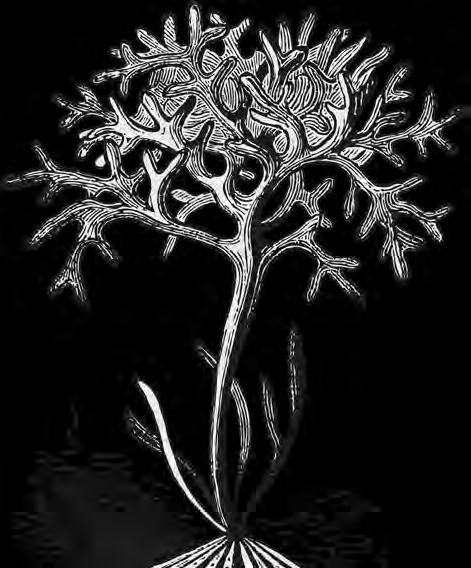
The idea for an SEB satellite meeting came about after John and Simon took a research trip to Antarctica last year. During the trip, they discussed updating John’s 19992 book, how temperature and oxygen plays a role in structuring macrophysiological patterns and how testing these patterns has changed in recent years. John, Simon and Francisco saw an SEB satellite meeting as an opportunity to bring together scientists from a diverse pool of expertise to discuss the development and future of macrophysiology. Attendees travelled from a wide range of latitudes to showcase physiological diversity and its underlying mechanisms from marine to terrestrial systems around the world and be treated to Italian coffee. Here are some of the highlights of the day.
The hottest topic of the meeting was the role of temperature as a mechanism underlying spatial gradients in biodiversity. Central to this was the thermal performance curve (TPC) or how animal performance changes over a range of temperatures. “There are two reasons why TPCs are such a useful
concept for understanding responses of organisms to environmental change” explains Dr Enrico Rezende (Pontifical Catholic University of Chile, Chile), “the first -reason is that the empirical curve is very pervasive”. D r Jennifer Sunday (McGill University, Canada) opened the meeting with a summary of how the characteristics of these TPCs, such as upper thermal tolerance CTmax , varies between marine and terrestrial systems across latitude3. “I still remember when I first plotted the data… it was just really striking” reminisces Jennifer. She showed that these differences may mean that marine and terrestrial species will shift their distribution in response to climate change differently 6 She also highlighted that global scale patterns are not reflective of how an organism behaves in its environment at local scales4 .
The second reason why TPCs are so pervasive in ecology and evolutionary biology, according to Enrico, is that “we have some idea from our understanding of thermodynamics of how it works”. Enrico developed a theoretical model of a TPC to compare TPCs found across different measurements of performance or fitness and levels of biological organisation. Enrico found that the shape of the TPC, or the thermal window, became narrower as you moved up in biological complexity. “Thermal adaptation is an emergent property”, he explains, meaning you may not see a pattern at the cellular level, but a pattern emerges when you look at the population level. “I wasn’t expecting such compelling differences between levels of organisation” says Enrico, noting that he does not have an explanation for this pattern but emphasises “the take home message there is that people are measuring traits in individuals,
One of the goals of macrophysiology is to “provide clear physiological diversity advice to conservationists so that they can prioritise their decisions” says Simon. This is a step forward from the traditional way of thinking about physiology in terms of averages. “We assume single populations are representative across their entire distribution” explains Dr Christine Cooper (Curtin University, Australia), “it’s only been more recently that we’ve started to appreciate that there is variation at the subspecies level, population level and even at the individual level”. This variation in physiological traits becomes important when translocating species to different areas.
C hristine showed that subspecies of the Australian brushtail possum (Trichosurus vulpecula), which are widely distributed across much of Australia and inhabit different climatic environments, geographically varied in their energy, heat and water use7 “We would suggest that if you are moving possums to an arid habitat, that the best subspecies to use would be the west Australian subspecies that seems to be better adapted to living in a more arid environment” says Christine.
Dr Scott Bennett (IMEDEA, Spain) showed how ignoring local adaptation potentially underestimated the vulnerability of marine communities to climate warming. He identified reefs around the world that were potentially vulnerability hotspots or resilient to a warming climate under two scenarios, which did or did not incorporate local variation in physiological traits. “These hotspots or safe spots are important to recognise because they can help regional planning
The day finished with a group discussion on the current and future thinking on macrophysiology including discussion on testing long-standing hypotheses of the temperature-size rule and the oxygen limitation hypothesis, as well as the measurement of CTmax . Everyone from seasoned researchers to newer PhD students got involved in the discussion, perhaps fuelled by coffee or by the comfortable atmosphere. As Simon observed “it is key to real progress in understanding, when everyone is willing to explore their own and others long, and not so long, held views”. The discussion also highlighted some less obvious points. “There was an obvious difference of opinion in the room on what Macrophysiology was for diagnosis or elucidation – and exploring that was both fruitful and illuminating” observed John, “The key thing I loved was that there was time to really chew over the issues raised”.
1. Gaston, K. J. et al. Macrophysiology: a conceptual reunification. Am Nat 174, 595-612, doi:10.1086/605982 (2009).
2. Spicer, J. I. & Gaston, K. J. Physiological diversity and its ecological implications (Malden, Mass. Blackwell Science, 1999., 1999).
3. Sunday, J. M., Bates, A. E. & Dulvy, N. K. Global analysis of thermal tolerance and latitude in ectotherms. Proc R Soc B: Biol Sci 278, 1823-1830, doi:10.1098/rspb.2010.1295 (2011).
4. Sunday, J. M. et al Thermal-safety margins and the necessity of thermoregulatory behavior across latitude and elevation. Proc Natl Acad Sci USA 111, 5610-5615, doi:10.1073/pnas.1316145111 (2014).
5. Sinclair, B. J. et al. Can we predict ectotherm responses to climate change using thermal performance curves and body temperatures? Ecol Lett 19, 1372-1385, doi:10.1111/ele.12686 (2016).
6. Sunday, J. M., Bates, A. E. & Dulvy, N. K. Thermal tolerance and the global redistribution of animals. Nature Clim. Change 2, 686690, doi: http://www.nature.com/nclimate/journal/v2/n9/ abs/nclimate1539.html#supplementary-information (2012).
7. Cooper, C. E., Withers, P. C., Munns, S. L., Geiser, F. & Buttemer, W. A. Geographical variation in the standard physiology of brushtail possums (Trichosurus): implications for conservation translocations. Cons Phys 6, coy042-coy042, doi:10.1093/ conphys/coy042 (2018).
Left Jacinta Kong
Photo credit: Bruce Edley

Each year, at the SEB Annual Meeting, young scientists submit their abstract to the Young Scientist Award Session and compete for the award of ‘best research presentation’. Our science writers Alex Evans and Jonathan Smith have summarised the research presented by our 2018 winners.
The beautifully delicate coral reefs of the world play an essential role in marine ecosystems, but right now they’re dying. Not only can we see this happening at an unprecedented rate – we can hear it too. This year’s winner of the Animal Section Young Scientist Award, Tim Gordon (University of Exeter, UK), presented a dynamic and emotional talk on his research into the rapidly changing bioacoustics of coral reef communities.
Tim first got interested in coral reef ecology while working off the coast of Kenya during his time as an undergraduate. “I was struck by the beauty and the value of coral reefs, but also by their vulnerability, and was inspired to do more research into their conservation,” he explained. Building on this interest, Tim then completed a Master’s course with Steve Simpson’s team at the University of Exeter and stayed on to pursue
his current PhD in coral reef soundscapes. Now, Tim and his team eavesdrop on reef communities in order to assess their health and interpret what this could mean for their future.
D uring the first half of his talk, Tim outlined the sad state of Australia’s Northern Great Barrier Reef and played actual audio recordings of the reef soundscapes as they are today alongside recordings from just 4 years earlier – and the difference was startling.
“Reefs get quieter and sound characteristically different when they are damaged by bleaching and tropical cyclones,” explained Tim. “It’s really heart-breaking to hear.” During his PhD, Tim and his team collected soundscapes from the Great Barrier Reef and conducted field experiments by replaying the sounds of healthy and degraded reefs in the ocean, finding that degraded reef sounds were much less attractive to juvenile fish than healthy reefs. Unfortunately, this degradation appears to signal the start of a devastating feedback loop where quieter reefs attract fewer fish,
which in turn causes further degradation.
On the brighter side, Tim spent the second half of his talk explaining how his work with reef bioacoustics can be used to monitor reef health and develop ways of using soundscapes in mitigating further degradation and encouraging reef rehabilitation.
REEFS GET QUIETER AND SOUND CHARACTERISTICALLY DIFFERENT WHEN THEY ARE DAMAGED BY BLEACHING AND TROPICAL CYCLONES
O n winning the award, Tim commented: “It’s a real honour to win the Young Scientist Award, but also very humbling - research is a team game and we all work together.” Tim ended his talk by graciously thanking his fellow researchers at the Universities of Exeter and Bristol and reminding us that effective change in this field can only be made when researchers work together with conservation practitioners and policy makers, as well as in collaboration with each other. “We have a lot of fun working together, so it’s great to be able to celebrate our successes together as well,” Tim concluded.

which genes are involved in the natural variation of root growth”. Based at the time in the Gregor Mendel Institute in Austria, Radka first set out to identify particular genes that vary and shape the root growth of Arabidopsis thaliana strains. She continued: “I combined a genome wide association study with an innovative root phenotyping study, and found a key candidate gene linked with variation in root growth: Adenylate Kinase (AK) ”.
W hile knocking down the function of AK in mutant strains of A. thaliana, Radka found a surprising effect on the root. “Without AK, roots grew less and had fewer cells than the wild-type strains, however the cells present were elongated to compensate; something that we did not expect to see in roots,” she confirmed. Thus, Radka’s experiments indicated that AK contributes to production of new cells in the meristematic zone of the root. At the same time, her experiments hinted at more complex genetic control of the roots than previously suggested.
Roots are incredibly dynamic organs in a plant’s toolkit. Not only are they stable anchors in the soil and efficient water and nutrient-delivery systems, but the root tips also undergo complex cellular changes to allow root growth. Interestingly too, the growth rate of roots is not fixed in a species; some genetic strains have been found to be better than others at putting down roots and understanding more about how these plants can vary their growth is crucial for understanding how they survive and thrive, and has implications, especially for agriculture and conservation.
Radka Slovak (University of Oxford, UK), winner of the YSAS from the Plant Section, introduced her investigations into the question of how such strains vary in their root growth rate: “We know some of the developmental regulators in plant growth, but it’s not clear
W ith this in mind, how does the gene AK influence cell production to promote root growth? Radka responds: “Further experiments indicated that AK promotes the biogenesis of ribosomes, the intracellular machines crucial for protein production”. With a higher efficiency in manufacturing ribosomes, plant cells would be able produce proteins faster, and undergo mitosis more rapidly, growing the root tissue. Excited about the implications of this work, Radka concludes: “Now that we know that ribosomal biogenesis is a factor in root growth, this opens the way for more detailed work into how this affects the variation in plant growth in general.”
Radka delivered a winning presentation in the YSAS session, and thoroughly enjoyed the opportunity to disseminate her research. “The YSAS gave me an excellent opportunity to present my PhD work to a really broad audience,” she concludes. “It was a great experience and I would recommend everyone to try it as well.”
ADENYLATE KINASE PROMOTES THE BIOGENESIS OF RIBOSOMES, THE INTRACELLULAR MACHINES CRUCIAL FOR PROTEIN PRODUCTION

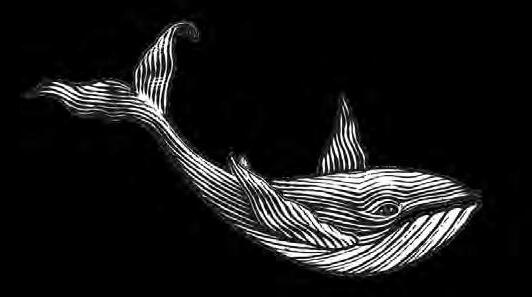
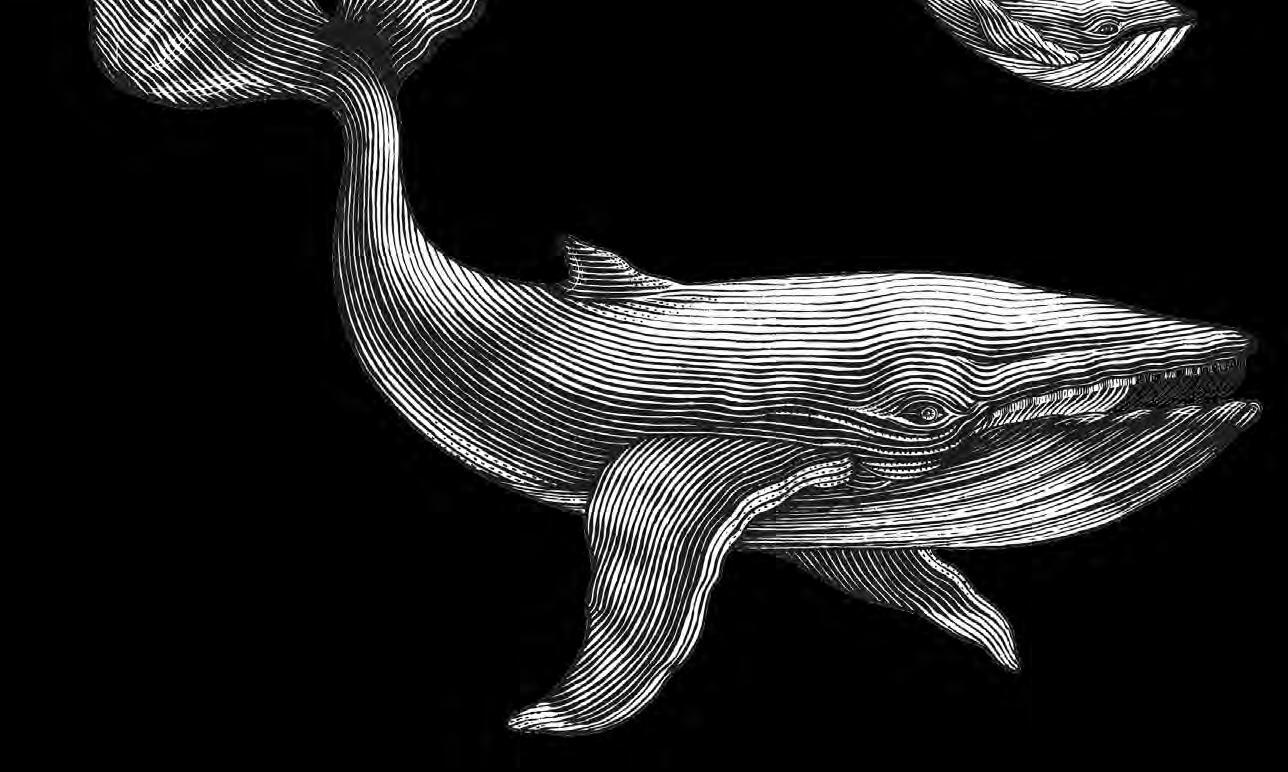

Climate change was a naturally prominent theme at this year’s SEB Annual Meeting, inspiring a number of stimulating interdisciplinary sessions. During one of these sessions, the often-overlooked effects of climate change on biomechanics were placed in the spotlight. Attendees were treated to talks on a wide range of exciting research topics covering animal locomotion, anti-predator defences and fascinating biomaterials - here are a few of the highlights.

Climate change is a phenomenon widely studied by ecologists and animal physiologists, but there are also many important biomechanical pieces that need to be added in order to complete the puzzle. Frank Seebacher and Paolo Domenici, organisers of the ‘Climate Change and Biomechanics’ session, were excited to bring together researchers from a range of disciplines for an exciting and increasingly important discussion. “We are both interested in the effects of climate change on organisms and felt that the field of biomechanics had a lot to offer,” explains Paolo. As global temperatures rise and the oceans become more acidic, it is important to understand both the small and large-scale effects of environmental change on all aspects of animal life – and experimental biomechanical research allows researchers to predict what real-world climate shifts are likely to mean for our planet’s wildlife. “We were pleased with the range of topics covered during the session and we hope that they will help to inspire more integrated research into biomechanics and climate change,” Paolo adds.
Paolo’s own research interests are currently invested in understanding the effects of climate change on fish swimming performance and behaviour. Marine life serves as a useful range of organisms to study in the context of climate change due to the large number of environmental changes caused by climate shifts such as increased sea temperatures, ocean acidification and hypoxia. “Marine organisms are facing many simultaneous stressors and it is fundamental to understand their impact on how these animals function and the potential for ecological repercussions,” explains Paolo. For many marine species, the ability to swim is crucial for their survival, especially when it comes to hunting or avoiding their own hunters. According to Paolo “Burst swimming performance will largely determine if prey will be successful at escaping predation, but there are also other important behavioural factors besides performance, such as responsiveness and escape direction”. These factors are essential in determining how fish will cope with the challenges of life, so how might they fare in the face of a changing climate?
MARINE ORGANISMS ARE FACING MANY SIMULTANEOUS STRESSORS AND IT IS FUNDAMENTAL TO UNDERSTAND THEIR IMPACT ON HOW THESE ANIMALS FUNCTION
T hrough a series of laboratory experiments he has conducted with Christel LeFrançois, a postdoctoral researcher now working at the University of La Rochelle in France, Paolo subjected various fish species to artificial threatening stimuli and analysed video footage of the resulting swimming responses1. By exposing the fish to a range of environmental conditions prior to the challenging stimuli, they were able to investigate the effects of acclimation to low oxygen environments and demonstrate the effects of climate changeinduced hypoxia on anti-predator responses.
Paolo’s results showed that exposure to hypoxic conditions affected many aspects of fish swimming behaviour and performance, including directionality and responsiveness.
“Although some sensory impairment was expected in hypoxic conditions, it was surprising to find that escape locomotion, which is fuelled anaerobically, is also affected by hypoxia,” says Paolo, adding that this may be due to the disruptive effects of hypoxia on the neurological mechanisms controlling escape responses. Building on this research, Paolo has also been working in collaboration with a team of researchers from James Cook University to investigate the relationship between escape performance in fish and ocean acidification, which is rapidly becoming another major concern for marine wildlife conservation. S o, what do these biomechanical disruptions mean for the future of fish? Paolo suggests that the environmental effects of climate change could have major ecological repercussions by interfering with the outcome of predator-prey interactions. “Certain taxa, including avian predators, will not be directly affected by marine stressors such as ocean acidification or hypoxia,” Paolo explains, “which may lead to an imbalance in these predatorprey relationships”. While Paolo’s research highlights the importance of understanding these fundamental interactions between climate change and locomotor performance, he reminds us that our ability to meet the challenges of environmental change not only requires effective communication between researchers, but also with policymakers and the general public.
Left Alex EvansWhile some animal species will instinctively run, fly or swim away at the first sign of trouble, others have adapted to take more dynamic approaches to self-defence. One such species is the ecologically and economically significant California spiny lobster ( Panulirus interruptus) which employs a wide range of defensive techniques in order to stave off potential predators such as sharks, octopuses and moray eels. But how effective will these techniques be in the strikingly different predicted environments of the future?
Kaitlyn Lowder, a PhD student at the Scripps Institution of Oceanography, UC San Diego, hopes to answer this question and was excited to present her work exploring the effects of ocean acidification on the anti-predator defences of spiny lobsters. Previous research in this field has focused largely on the physiological costs of ocean acidification, but Kaitlyn’s interests are currently geared towards understanding the more functional consequences of these low pH environments: “The field of biomechanics provides the tools to study some of these lingering important questions”.
THE FIELD OF BIOMECHANICS PROVIDES THE TOOLS TO STUDY SOME OF THESE LINGERING IMPORTANT QUESTIONS
To test how altered pH and temperature conditions affect the different defence mechanisms of spiny lobsters, Kaitlyn built special flow-through water tanks where temperature and pH could be controlled and then exposed her animals to the reduced pH conditions predicted to occur by the year 2100. She then examined three key defences in the spiny lobster arsenal, including the kinematics of their anti-predator ‘tail-flips’, their responses to chemical cues, and the material properties of their antennae. While Kaitlyn has captured some beautiful slow-motion videos of their ‘tail flips’ in action, she admits that her spiny superstars are not always so graceful: “My favourite clip is of a lobster that rockets straight up and emerges from the water like Shamu… then lands with a total backflop!”
K aitlyn’s experiments so far have revealed that, while some defences may be impaired by ocean acidification, others may remain unaffected. “Neither the speed and distance of the tail flip escapes nor the flexural stiffness of the antennae differed between the lobsters in today’s environmental conditions and those in future conditions,” Kaitlyn says, adding that this may be somewhat due to the abundance of food available during the experiments or the short nature of the experiments compared to the lobster’s natural moult cycle.


“However, when I presented lobsters with a cue of a prey species, those in the lower pH conditions did not respond the same way that lobsters in today’s conditions did!” Kaitlyn goes on to suggest that this may be due to an impaired ability to detect or interpret chemical cues from the presence of the prey.
S peaking with Kaitlyn after the conference, it is clear that there are many more directions in which she wants to take this research, such as exploring how future environmental conditions may affect the material properties of spiny lobster exoskeletons and how their ability to handle prey might change if their mandibles are similarly affected. Finally, she highlights the importance of her research in the context of the sustainable harvesting of natural resources: “I hope my research can help fishery managers and fishers better look towards what is coming down the pipeline so that healthy fisheries can be maintained far into the future.”
Photo credit:
Kaitlyn Lowder
Opposite page
Mussel Mesocsoms
Photo credit:
Emily Carrington
Many molluscs provide key ecosystem services to humans and other organisms, such as improving water clarity through filter feeding, creating habitats for smaller creatures and providing a food source for a wide range of species including humans. Mussels are one such mollusc species that holds significant ecological and economic importance 2 , but many of the services they provide rely on healthy biomechanical functions. One such function is the strong and stable attachment to substrates, which is primarily achieved through the deployment of organic byssal threads. “Byssal threads are golden flexible tethers, like bungee cords, that secure the animal to surfaces,” Emily Carrington from the University of Washington, USA explains. “If a mussel does not have a secure attachment, it falls to the seafloor and dies, usually eaten by hungry crabs or sea stars.” These byssal threads represent a key element of mussel survival and rely on specific mechanical and chemical processes in order to work properly, but how will these processes fare in the face of climate change?
C onducting experiments in both the laboratory and at a local mussel farm, Emily and colleagues were able to subject the mussels to controlled environmental conditions as well as more natural situations. The laboratory experiments took place in custom-built mesocosms at a range of pH and temperature conditions and ended with the harvesting of byssal threads for
strength analysis, while less-regulated but more naturally variable experiments took place at the mussel farm. The results of their work demonstrate that when subjected to low pH, hypoxia or high temperature conditions (all environmental factors likely to worsen with climate change), these byssal threads can become much weaker and more likely to break under stress. Perhaps most intriguing, these different environmental factors seem to affect separate parts of the byssal structure in different ways. “We learned that high temperature impacts one part of a thread while low pH impacts another, so they can’t combine forces to make a specific region really weak,” explains Emily, “however, low pH and low dissolved oxygen both target the adhesive plaque, so that combination could be particularly troublesome.”
B uilding on these results, Emily has developed a predictive model that estimates the likelihood of mussel mortality based on biomechanical theories and backed by her mussel byssal experiments. By modifying the model to change the environmental conditions in various ways, Emily is now able to further explore the relationship between biomechanics and mussel mortality in the context of future climate change. “This provides mussel growers and resource managers with a tool for predicting which water conditions are harmful, which is the first step in developing monitoring and mitigation strategies,” she concludes.
IF A MUSSEL DOES NOT HAVE A SECURE ATTACHMENT, IT FALLS TO THE SEAFLOOR AND DIES, USUALLY EATEN BY HUNGRY CRABS OR SEA STARS
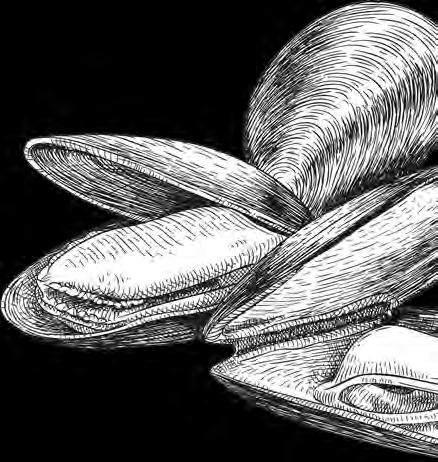 Left Spiny Lobster
Left Spiny Lobster
While there were plenty of talks concerning the effects of climate change on marine species, there were also a number of talks dealing with terrestrial and aerial animals too. Two such researchers presented their work on the relationships between climate change and biomechanics in two enigmatic groups of insects: dragonflies and damselflies.
Zak Mitchell, a postgraduate researcher at the University of Leeds, reported on his PhD work concerning the important link between the flight performance of dragonflies and the effects of climate change on their natural distribution. “Dragonflies are notoriously good fliers, but their development and lifehistory are directly related to temperature” says Zak. “Previous work has shown that most dragonfly species are responding in some way to increasing global temperatures.” Dragonflies rely on their ability to fly for critically important aspects of their daily life such as hunting and escaping predators, but their long-term survival may also depend on their ability to move into new habitats when the climate shifts. Changing global temperatures are shifting the range margins of many plants and animals towards the planet’s poles3, but what does this mean for dragonfly species of differing flight capabilities and how can this research be best used to protect them?
To answer these questions, Zak drew on an impressive range of technical gadgets and historical data sources. Using a specially constructed mirror-cube flight arena and a high-speed camera, Zak was able to fly dragonflies and track their movements from multiple angles, which allowed him to create a digital 3D reconstruction of their flight patterns and measure their flight performance in terms of speed and manoeuvrability. In order to link this with the insects’ ecology, Zak scoured databases of British dragonfly sightings over the past 25 years to calculate the changes in range margins for 12 British dragonfly species. Together, Zak used these data sources to link their flight performance and their ecology and interpret what this could mean for dragonflies in the face of a shifting climate.
Zak’s work reveals that dragonfly flight performance is correlated with the historical range expansion of each species, suggesting that better flying species are more capable of reaching new regions, but that other factors, such as the availability of suitable habitat, also play important roles and may limit the true extent of range expansions. Zak also highlighted the inconsistent claims made by previous studies linking flight performance and climate-induced range expansion, explaining that a more cohesive approach is required in order to better understand the interactions

between these fields. “Some studies do not specify how they determine flight performance or they simply employ morphological proxies and assume that longer wings are indicative of better flight performance,” he explains. “Flight performance is a complex quantity and cannot easily be described by any one metric.”
I n a rapidly changing world, it is crucial that conservation efforts make the most of the available knowledge in order to put scarce resources to their best use, and this is certainly true of Zak’s work on flight performance in the context of insect conservation. “The location of future dragonfly reserves must be planned in relation to the ability of relevant species to reach them - and for species with poor flight performance, stepping stone habitats may be vital in allowing them to expand in the face of climate change,” concludes Zak.

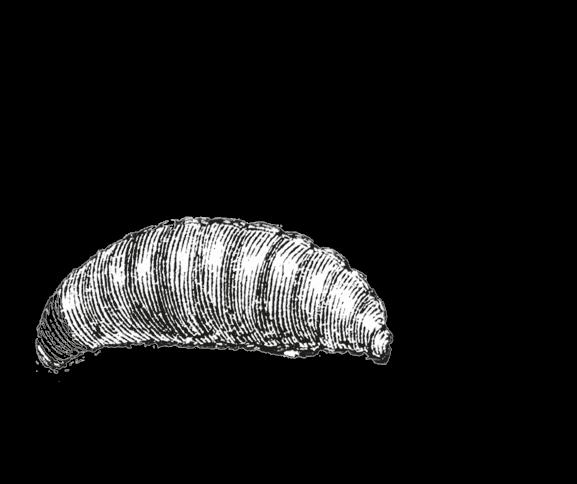
Later in the afternoon, Nedim Tüzün, a researcher at KU Leuven in Belgium, spoke about his work with a close relative of the dragonflies. “Damselflies are excellent model organisms for climate change studies because both the larvae and the adult react strongly to changes in temperature,” explains Nedim. “These reactions can often be detected in their physiology, morphology, locomotor performance and life-history traits.” Nedim is specifically interested in the effects of climate change that are carried over from early life stages and manifest in the adult form. “For example, temperature increases during the damselfly larval stage can affect the flight performance of the adult,” he says, “but is this due to changes in the development of the wings or the flight muscles?”
Nedim set out to solve this question by monitoring the development of damselflies from larvae through to adulthood and assessing their eventual flight performance. In order to reflect real world temperature fluctuations, Nedim created a controlled outdoor ‘mesocosm’ experiment that contained aquatic tanks for the damselfly larvae to develop in. These tanks were kept either at ambient temperature or at 4°C above ambient to represent a predicted future temperature increase due to climate change. Once the adults had emerged, he assessed their flight performance in a ‘flight tube’ and took measurements of their muscle content and wing shape to determine how they had been affected by raised temperatures during their earlier life stages.
and negatively affect the ability of these insects to fly.” Since flight performance is a crucial aspect of feeding and dispersing for many airborne insects, this poses a problem for damsel survival in the predicted warmer climate of the future. However, Nedim suggests that there is hope: “French populations of the same damselfly, for example, perform better at higher temperatures compared to Swedish populations - simply because the French are exposed to, and consequently adapted to, higher temperatures.” But with the climate changing at an ever-increasing pace, will these damselflies be able to adapt rapidly enough, or will they simply struggle to acclimatise to the new warmer world? Only time will tell.
1. L efrançois C, Shingles A, Domenici P (2005) The effect of hypoxia on locomotor performance and behaviour during escape in the golden grey mullet Liza aurata). J Fish Biol, 67 1711-1729
2. https://www.fws.gov/midwest/endangered/clams/mussels. html
3. C hen, I. C., Hill, J. K., Ohlemüller, R., Roy, D. B., & Thomas, C. D. (2011). Rapid range shifts of species associated with high levels of climate warming. Science, 333(6045), 1024-1026.
FLIGHT PERFORMANCE IS A COMPLEX QUANTITY AND CANNOT EASILY BE DESCRIBED BY ANY ONE METRIC

Watch out for a collection of articles from this session which are due to appear in the SEB’s journal Conservation Physiology: https://academic.oup.com/ conphys
“ We found that larvae exposed to higher temperatures during development became adults with worse flight performance,” says Nedim, specifying that this reduction in flight performance appeared to be linked to a reduced flight muscle mass observed in the adults from the heated mesocosms. “This demonstrates that the carry-over effects of warming during early life stages can bridge metamorphosis
WE FOUND THAT LARVAE EXPOSED TO HIGHER TEMPERATURES DURING DEVELOPMENT BECAME ADULTS WITH WORSE FLIGHT PERFORMANCE
Opposite page
Adult Damselfly emerging
Photo credit:
Nedim Tüzün

In light of a changing climate worldwide, important ecosystems such as forests are expected to change rapidly. So what exactly will happen to forests during this major challenge? Investigators in this field met up at a session entitled ‘Climate Change Impact on Urban and Natural Forests’ at the SEB Annual Meeting in Florence to present their answers to this question.
Forests are iconic parts of the landscape, and are hugely beneficial for our health, ecosystem and economy. For example, they trap carbon dioxide from the atmosphere, protect the soil from erosion, and provide shelter and food for animal wildlife. Urban forests may even reduce depression and anxiety in city-dwellers.
It is not surprising that the sensitive ecology of forests is threatened by the predicted warmer temperatures, higher atmospheric CO 2 , as well as droughts, floods and other extreme weather patterns accompanying climate change. Therefore, understanding the threat to forest habitats is crucial to knowing how resilient they are, and better informs our strategies for preparing for the changes. This was the main aim of speakers presenting at the SEB Annual Meeting’s “Climate Change and Impact on Urban and Natural Forests” session. In this article, we highlight the progress of some of the speakers as they tackle this complex task.
EVEN A SMALL IMBALANCE IN EUCALYPT CHEMISTRY IN CLIMATE CHANGE COULD SERIOUSLY AFFECT KOALA SURVIVAL
Elizabeth’s research involved an ambitious trip to Australia to directly sample the volatile emission profiles of the eucalypts in the forest. There, her PhD student Mette Sørensen placed bags around different branches of flowering trees and pumped filtered air into and out of the bag to extract the volatiles. The team then measured the volatile emissions from both leaves and flowers using chromatography.
“This work is important because it is the first study to target adult eucalypts in forest habitats instead of younger, more accessible plants in plantations,” Elizabeth confirmed. “Additionally, it is the first time eucalypt flowers have ever been sampled in the field.”

Though it may not be obvious to observers, plants are incredibly dynamic organisms. Unable to move and behave as animals can, these complex chemical factories instead interact with their environment using volatile chemicals released into the air. Not only this, but the specific recipe of volatile chemicals can change according to external factors.
E lizabeth Neilson, from the University of Copenhagen, Denmark, studies these volatiles and how they respond to environmental challenges. “Have you ever smelled cut grass?” she asked. “That smell is the result of volatiles released following damage, analogous to a human calling out a danger warning.”
However, direct damage is not the only reason plants have to complain. Fluctuations in weather accompanying global climate change likely affect the volatile emissions of plants. “These could cause changes to plant chemistry, which in turn may affect the behaviour of animals dependent on these plants in the ecosystem, such as herbivores or pollinators,” Elizabeth explained.
To better understand the effect of climate change on the plant chemistry and animal interactions, Elizabeth studies an interesting model organism interaction: the eucalypt tree and the koala. “Eucalypt forests are integral to the ecology of Australia and are a crucial tree for the koala,” she continued. The iconic koala exclusively depends on toxic and nutrient-poor eucalypts for nutrition, sleeping 80% of the day just to survive on this eucalypt diet. “Not just this, but koalas may use volatile chemicals from eucalypts, such as oximes, for scent marking, for example,” Elizabeth revealed. “Overall, even a small imbalance in eucalypt chemistry in climate change could seriously affect koala survival.”
T his experiment found a complex suite of volatiles released from eucalypt leaves and flowers, whose role remains to be elucidated. “The flowers showed high variation in their profiles that was very species-specific. This may be because it is advantageous for each eucalypt species to attract their own particular pollinators,” Elizabeth noted.
O ther experiments growing seedlings under elevated CO2 and temperature conditions also changed the volatiles emitted from these plants. “This shows that climate change will likely affect this intricate communications system,” Elizabeth concluded. “Next, I hope to investigate the effects these changes have on the wider ecosystem, including the effect on koala biology.”

IT IS THE FIRST STUDY TO TARGET ADULT EUCALYPTS IN FOREST HABITATS INSTEAD OF YOUNGER, MORE ACCESSIBLE PLANTS IN PLANTATIONS
As we wandered around the host city of Florence during this Annual Meeting, we often took refuge from the summer heat under trees. However, urban plants are more than just passive sun-shades; they are themselves sensitive to environmental stresses and require their own protection, asserted Francesco Ferrini, from the local University of Florence. In fact, he suggested that acclimatising these trees in urban environments might help them survive the onset of climate change in Mediterranean countries.
Urban plants have a whole set of unique challenges compared with rural plants. “In the near future, European countries can expect more extreme and unpredictable rainfall, some with more droughts and others with more floods,” suggested Francesco. However, cities have their own microclimates to think about too, as Francesco continued: “Cities are generally around three degrees hotter than rural areas, and have more pollution, poorer soil and competition from construction works.” These factors will likely exacerbate the expected stresses of climate change in the future.
Francesco presented his studies exploring how we can acclimatise urban plants to future droughts in the city. “Our philosophy in this
group is ‘simple research, deep investigation’,” he said. His studies involved cultivating plants in nurseries, and then changing a single factor, such as the amount of water available. His team then investigated the changes to the plants on morphological, physiological, biochemical and genetic scales.
Using this method, Francesco’s team found a way help urban plants resist drought shocks. He explained: “If you reduce the water treatment while the young plants are in the nursery, this will toughen them up ready for when they are delivered to the city sites.” This may also help the plants to weather the predicted droughts accompanying climate change.
O ne obstacle to implementing these measures to protect the plants is the attitudes of the authorities who care for the urban green spaces. “The authorities often do not like the expense of keeping these green areas,” continued Francesco. “We need to make people aware of the huge benefit of these plants for our ecology, as well as our health; this is not a cost, it is a long-term investment.”
Using more innovative culture techniques, it is thus possible to mitigate changes wrought by climate change. “This is not just a local thing,” Francesco explained. “These findings are important because they can help plants in every city around Europe prepare for the uncertain future.”

With increased droughts in the Mediterranean countries will probably come increased flooding in Northern European countries like the UK. Flooding in urban environments takes place when drainage systems are unable to cope with the amount of water entering them, causing huge economic damage to prone areas. Thus, strategies reducing the amount of water entering the drainage systems would help to keep down the costs of climate change.
IF YOU REDUCE THE WATER TREATMENT WHILE THE YOUNG PLANTS ARE IN THE NURSERY, THIS WILL TOUGHEN THEM UP READY FOR WHEN THEY ARE DELIVERED TO THE CITY SITES
T ijana Blanusa, from the Royal Horticultural Society, UK, advocated using urban plants to assist with flood prevention. Normally, urban spaces pave over waterabsorbent soil with concrete and stone, removing any way to reduce water runoff. In contrast, plants and their host soil can do a lot to reduce this runoff. “Maintaining urban plants is substantially cheaper compared with artificial systems,” Tijana related. “Plants are able to capture rainfall and passively assist with flood prevention efforts.”
To promote the flood-prevention potential of urban plants, Tijana carried out studies on species of hedges. “Hedges are comparatively under-studied in this context; they are also very relatable for the general public when we communicate this research,” she explained. She aimed to discover which species of hedge are best able to reduce water runoff. “Different species handle water in distinct ways,” she continued. “For example, we hypothesised that species that evaporate and absorb water more quickly, and those that have a larger leaf and canopy size, would best reduce runoff.”
I n her controlled experiments, Tijana simulated rainfall onto different species outdoors and applied a set amount of water to each container, measuring the water runoff from each species. “Hawthorn and Cotoneaster franchetii were the best species for reducing runoff,” she confirmed. “Although hawthorn was slightly more effective, it actually loses its leaves in winter whilst C. franchetii is evergreen, showing that really a mix of species is ideal for adaptability.”
T his runoff-reduction benefit is only one of many that plants provide in the urban landscape; Tijana’s work has also included pollution-capturing and cooling effects of different hedge species. In spite of this, green spaces are becoming less common in the UK. “Green spaces need more attention from the public and governmental bodies,” concluded Tijana. “Our studies could convince them that we need to protect and nurture the urban green spaces, not ignore them.
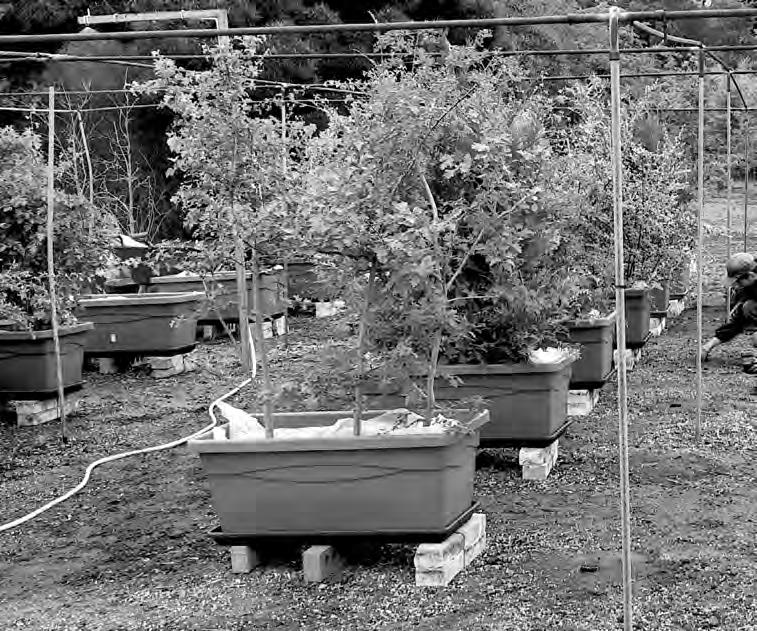
Plants have ingenious systems for supplying water to their various parts. A passive system of evapotranspiration, with evaporation of water from the leaves pulling water up the plant’s xylem from the roots, requires very little energy. However, in times of drought, this sensitive system falls apart, with high pressure differences causing air cavities in the xylem and veins, damaging them and killing the plant.
T his is therefore a highly important consideration in a world undergoing climate change, with more extreme droughts and rainfall patterns expected. Timothy Brodribb, from the University of Tasmania, Australia sees this taking place in forests around Australia. “Forests are threatened with drought conditions here; thus, we need a way to understand exactly how resilient the plant species are, as well as the time course of mortality,” he elucidated.
I n order to understand when cavitation happens in a plant, you first need to be able to reproduce it and measure it in the lab. Classic methods for measuring the plant’s vulnerability to cavitation include centrifugation, where a plant is spun on a rotor, causing rapid cavitations, and Computer Tomography (CT) in a synchrotron, used for making amazing detailed images of the structures. “However,” added Timothy, “centrifugation does not always reflect natural cavitation in many species; whereas CT imaging in a synchrotron is expensive, time-consuming and damages the sample.”
Timothy and his collaborators developed a new innovative technique for imaging the occurrence of cavitations in plant seedlings. “It is deceptively simple; you just snapshot a backlit plant every minute with a high quality camera, and use image comparison software to measure moments of the lightning-fast cavitation,” enthused Timothy.
T his versatile technique is important because it allows for longitudinal experiments that capture exactly when a plant starts to die from cavitation. Timothy continued: “We have measured the vulnerabilities of different species and even simultaneously measured different plant organs in drought conditions”.
For example, using this method in the olive plant, he discovered that the roots of the plant were the most resistant to cavitation in their samples, whereas the largest plant vessels were particularly vulnerable. In another species, the tomato plant, everything was equally vulnerable to cavitation.
A nother advantage of this technique is that it is very applicable to conditions in the field. “With these findings, we have been able to apply it to the natural world with amazing precision,” remarked Timothy. “In one instance, we predicted exactly which species would perish first in a drought-stricken area, and our predictions were spot on.”
W ith this work, Timothy aims to expand his efforts and collect collaborators. Furthermore, he hopes to launch more phenotyping projects to inform our efforts combatting droughts exacerbated by climate change.
Left City Trees Photo credit: Francesco Ferrini Opposite page Hedge plants in troughs, ready for the start of rainfall runoff experiments Photo credit: Tijana BlanusaPlants face strong challenges when enduring the extreme consequences of climate change. They cannot simply pack up and move on, neither can they genetically adapt to the rapid changes. Thus, they need to be able to adapt their phenotypes.
V ioleta Velikova, from the Institute of Plant Physiology and Genetics, Bulgarian Academy of Sciences, Bulgaria, wants to better understand how native plant species adapt their physiology to these incoming challenges. “This knowledge will be instrumental for helping us to reduce the danger to these plant species,” she said in her presentation.
A key mechanism for physiological adaption in plants is by using biogenic volatile emissions, the most abundant of which is isoprene. “Isoprene influences plant physiology and survival,” explained Violeta. “It affects plant photosynthetic organelles, called the chloroplasts, and is involved in protection from many cellular stressors, such as reactive oxygen species.”
To investigate the role of isoprene in drought protection, Violeta’s team selected Arundo donax an emitter of isoprene, and Hakonechloa macra , a non-emitter. They then subjected the plants to drought conditions, before rescuing them by rewatering. “Interestingly, the isoprene-emitter, A. donax, recovered its photosynthesis better than the non-emitter,” remarked Violeta. “This indicated that isoprene protects the emitting plant’s vital photosynthetic functions from droughts, while non-emitters invest in other metabolites to cope with stresses.”
Violeta’s team then carried out proteomics on genetically-modified plants to understand the exact effects of isoprene on plant photosynthesis. “Genetically knocking down the isoprene synthase gene in transgenic poplar trees strongly reduced isoprene emission and actually modified protein profile in the chloroplasts,” Violeta described. Isoprene seems to protect photosynthesis by altering the structure of the photosynthetic membranes within chloroplasts, helping them to recover their function after drought stress.
W ith this knowledge, and strategic study of transgenic models, we now know much more about how some plant species are able to resist the stressors brought on by climate change, as Violeta enthused: “Plant species that emit isoprene are definitely more protected from transient extreme drought events than nonemitters; this informs us much better in our efforts to preserve the habitats undergoing these stresses in the near future.”
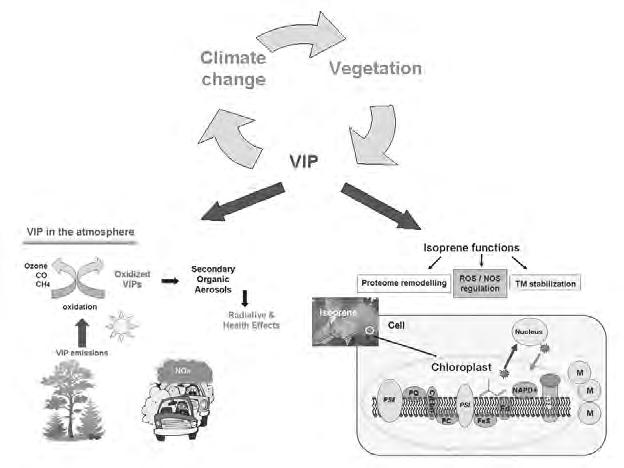
The climate is undergoing profound changes in the near future, and this will bring more extreme weather patterns in European countries, such as intense flooding and drought. As has been discussed in this SEB session, many plant species are armed to cope with these changes to a certain extent, however, other species will need help, especially those in the more stressful urban environments.
S aving these plants clearly benefits society. The urban plants talks show that, in fact, these plants provide all sorts of advantages to the urban society such as capturing pollution, cooling down the city environment, reducing rainfall runoff and improving our health and wellbeing. These benefits are not discussed enough in the governmental bodies nor in the public sphere, however, the work of these speakers informs efforts to maintain the benefits of the green spaces. Thus, safeguarding plant life during climate change will be instrumental in preserving the habitats, and animals dependent on them. This is an investment worth making.
Watch out for a collection of articles from this session which will feature in SEB’s journal Conservation Physiology
Above Physiological function of biogenic isoprene
Photo credit: Violeta Velikova
SOCIETY FOR
SEB MEMBERSHIP
70% OF MEMBERS LEARN ABOUT SEB THROUGH WORD OF MOUTH
SEBIOLOGY.ORG #SEBPACK
PLANT SPECIES THAT


MAKE EXTRAORDINARY CONNECTIONS NETWORK AND BUILD RELATIONSHIPS WITH EXPERIMENTAL BIOLOGISTS FROM AROUND THE WORLD

THINK BIG TAKE PART IN CROSSDISCIPLINARY CONFERENCES AND SHARE INNOVATIVE AND INSPIRING DATA, IDEAS AND RESULTS
DO MORE APPLY FOR GRANTS AND SPONSORSHIP TO INCREASE YOUR OPPORTUNITIES
FAST TRACK YOUR CAREER ACCESS JOURNALS, EDUCATION AND TRAINING SUPPORT
From sharing individual experiences to collecting data on a global scale, members of the general public are playing an increasingly important role in the way that we gather information for research. At this year’s SEB Annual Main Meeting, a panel of researchers, policymakers and media professionals shared their diverse experiences and thoughts on how we can best utilise this unique and important resource.


CITIZEN SCIENTISTS CAN HELP RESEARCHERS TO COLLECT A LEVEL OF DATA THAT IS SIMPLY NOT POSSIBLE WITH CONVENTIONAL SCIENTIFIC APPROACHES AND FUNDING
There have always been enthusiastic volunteers interested in science, but only recently have they been given a name,” said session co-convener Sue Broom, welcoming attendees to the annual Science with Impact session. Along with SEB+ Section Chair George Littlejohn, Sue felt that the time had come for a thorough examination of this increasingly relevant topic featuring an experienced panel of experts in citizen science. “It could be easy to dismiss citizen science as an exercise best suited just for schools or groups interested in surveying local wildlife,” Sue explained, “but once you scratch the surface, you realise that citizen science projects involving astrology, cancer research and climate change are regularly making valuable contributions to scientific research.” One such example that Sue provided was the Zooniverse 1 an international citizen science platform with over 1.6 million participants that has contributed to 180 published research articles across a broad spectrum of topics since the project’s inception 8 years ago and perfectly demonstrates the phenomenal value that citizen science holds.
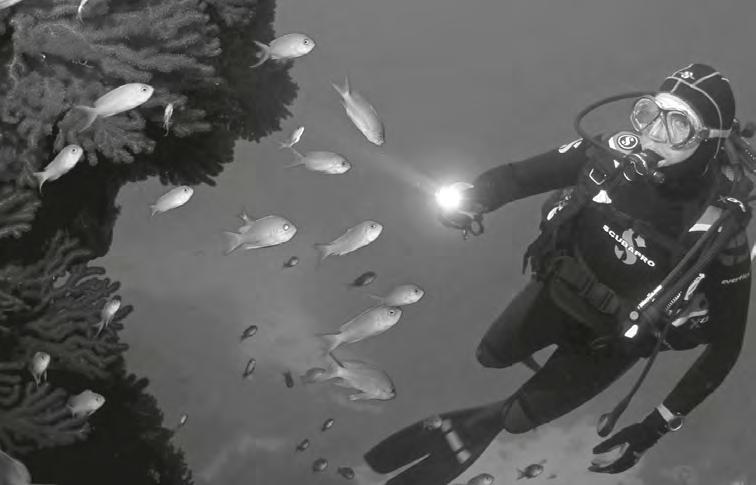
Martin Brocklehurst from the European Citizen Science Association (ESCA) was the first panel member to share his insights into the world of crowdsourced research.

A s a representative for the ESCA, an important institutional framework for citizen science, Martin began by explaining that one of the major benefits of citizen science is simple - the vast economic value it offers. “Citizen scientists can help researchers to collect a level of data that is simply not possible with conventional scientific approaches and funding,” explained Martin. For example, a study by the University of Washington estimated that the organised use of volunteers to collect biodiversity data in the USA was saving upwards of 2.5 billion dollars in research labour every year2 . It is recognition of facts like these that led to Martin representing the citizen science movement at last year’s UN Science Policy Forum and starting an international effort towards a ‘Citizen Science Global Partnership’ that will aim to include a network of institutions from countries beyond those currently featured, which come mainly from Europe and North America.
Many of the citizen science projects Martin described have potentially wide-reaching social and environmental impacts, such as the identification of specific problem areas for urban air pollution and the mapping of human and native wildlife diseases. One such example doing great work with publicly collected data is the Global Mosquito Alert Consortium 3 (GMAC). “The GMAC arose out of a real need to understand the changing distribution patterns of disease-carrying mosquito species that can transmit Zika, yellow fever, chikungunya, dengue, malaria and the West Nile virus,” explained Martin. “Citizen science programmes
such as this have the potential to deliver data from those most affected and exposed to the disease and help them to manage that risk.”
M artin also adds that it’s important to make sure that the data collected by citizen science projects are relayed back to the public in accessible and understandable formats, so that people can benefit from the value that their contributions hold. “At certain times of year in the Netherlands, for example,” explained Martin, “information provided from citizen science programmes is routinely provided as part of the weather forecast, highlighting where the greatest risks of getting bitten by mosquito and ticks occurs.”
Similarly, recent citizen science projects concerned with monitoring the air quality in Belgium have successfully identified previously unknown pollution hotspots and further help to demonstrate the enormous research value provided by crowdsourced data. Martin highlighted that citizen science projects like these not only benefit researchers but also offer new opportunities and solutions for the communities that get involved. “By involving local people in our research, we empower them with the knowledge to manage risks and build pressure for change,” concluded Martin. “When 20,000 people engage and understand the risks from urban air pollution, it becomes much more difficult to ignore the issue.”
Opposite page
Alex Evans
Left Martin Brocklehurst speaking Photo credit: Simon Callaghan Above Scuba survey Photo credit: Stefano GoffredoNext to speak was Steffano Goffredo, a researcher with the Marine Science Group at the University of Bologna, Italy who had a refreshing take on the theme of citizen science. As a marine biologist concerned with the ecological health and diversity of marine environments, Steffano’s research requires a great number of wildlife surveys that span large underwater seascapes accessible only by trained divers. This task may sound daunting, but luckily Steffano has a trick up his sleeve.
“The last two decades have seen a rapid increase in recreational diving activity,” he explained. “This has prompted researchers to involve recreational divers as volunteers and make use of their interest in marine diversity.” Not only does this recruitment of citizen scientists have enormous economic benefits in saving time and money through free research labour, it also helps to increase scientific literacy and the public awareness of the issues facing marine biodiversity. “Environmental education provides a long-term solution to the sustainable management of the environment,” explained Steffano. “Several studies have demonstrated how this type of education can be a proactive method for preserving our natural resources.”
O ver the last two decades, Steffano has completed a number of successful citizen science projects thanks to the sterling efforts of recreational divers. These fascinating projects have included spatial surveys of seahorse populations, large-scale coral reef health checks in the Northern Red Sea and, most recently, an extensive four-year study of Mediterranean marine biodiversity. Each of these studies was the result of tens of thousands of hours spent diving by recreational divers, a feat that would simply not be possible with only a small team of researchers. In addition to collecting wildlife data, these studies also served as effective validations for this crowdsourced approach to data collection. “Our projects have provided successful case studies of collaboration among researchers, local authorities and the public, showing that with appropriate recruitment and training, volunteer-collected data are qualitatively equivalent to those collected by professional researchers,” said Steffano. Finally, he adds that these projects are quickly becoming fundamental tools for informing large-scale and long-term marine management in a rapidly changing world where climate change and the harvesting of natural resources are challenging the status quo of our precious marine ecosystems.
Deborah Cohen, Editor for the BBC Radio Science Unit, spoke about how the general public can be an abundant and enthusiastic source of data when accessed through popular media and entertainment channels. “In the BBC, we often use radio, TV and online platforms to tell the lay audience about ways that they can get involved in scientific research,” she explained. Deborah’s unit is especially keen on working with research institutions and groups in order to bring their big research questions to the masses via the airwaves. Many of these collaborative efforts, such as the BBC’s Lab UK TV channel, have led to impressively large crowdsourced data sets and impactful publications. “We recently collaborated with the Wellcome Collection to carry out the largest ever survey of loneliness,” explained Deborah. “Around 55,000 people completed the Anatomy of Loneliness questionnaire and we will be bringing the results and potential solutions to BBC Radio 4 listeners in October.”
Speaking to Deborah after the session, she recalled that one of the highlights from her time working with citizen scientists was the ‘So You Want to be a Scientist’ show on BBC Radio: “One of the winners of the show, Ruth Brooks, wanted to know how far you needed to move snails out of your garden before they came back, so we helped her to find out the answer.”
Interactive TV and radio shows such as these give people real experiences of conducting evidence-based science experiments and help to demonstrate the crucial but less well-publicised aspects of research such as data analysis and statistics. “Ruth and her research received a lot of publicity and the work that she did inspired further research into our understanding of snail homing behaviour!” Deborah added. Finally, she reminded us that in an increasingly connected world, getting involved with science is easier than ever, and there are likely to be elements of citizen science that will appeal to anyone and everyone: “I would encourage anyone to give it a go as it can be great fun as well as enlightening!”
they were pleased with the informative discussions but noted that there were fewer questions from the floor than during the purely scientific sessions: “I think this reflects the relatively low involvement of scientists with citizen science and emphasises the need for this session. It’s ever more important for scientists to communicate their work with the public and citizen science is a great way of doing that,” Sue concluded. “We hope that people left the session more willing to think of ways they might collaborate with the public in future!”
1. https://www.zooniverse.org/
2. T heobald E, Ettinger A, Burgess H, DeBey L, Schmidt N, Froehlich H, Wagner C, HilleRisLambers J, Tewksbury J, Harsch M, Parrish J (2015) Global change and local solutions: Tapping the unrealized potential of citizen science for biodiversity research. Biological Conservation, 181 236-244
3. https://ecsa.citizen-science.net/global-mosquito-alert
SOCIETY FOR EXPERIMENTAL BIOLOGY
Finally, there was time for questions for the panellists, with attendees raising discussions of topics such as the support for open and shared data policies, and the ‘gamification’ of science projects to increase public engagement. Speaking with Sue and George after the session,
THE TRAVEL GRANT ENABLED ME TO SHOWCASE MY RESEARCH AT A PRESTIGIOUS AND INTERNATIONALLY-RECOGNISED MEETING!
SEB STUDENT MEMBER

BY INVOLVING LOCAL PEOPLE IN OUR RESEARCH, WE
EMPOWER THEM WITH THE KNOWLEDGE TO MANAGE RISKS AND BUILD PRESSURE FOR CHANGE

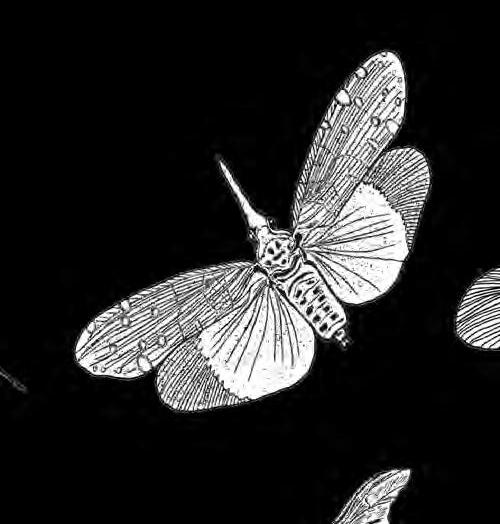

Want to attend a meeting to present your research or visit another laboratory to learn a new technique? We can make it happen. Look at our Company of Biologists and SEB Annual Meeting travel grant schemes: www.sebiology.org/grants-and-funding/training-and-travel-grants
AWARDS OF UP TO £500
Traditional plant and animal biology were not the only focus in this year’s Annual Meeting. Microbial and algal organisms also received a lot of attention in the Green Microbes session, where speakers discussed the benefits of understanding their biology. This article features two key examples of research presented at the session: of coral symbiosis and of seaweed cell biology.
Coral reefs are diverse hotbeds of cooperative partnerships, one famous example being the iconic symbiosis between sea anemones and clownfish. Some of these cooperative relationships are crucial to the survival of the coral reef itself, as they provide scarce nutrients to the corals. “The clear blue tropical seas are very low in nutrients,” began session speaker Annika Guse, from the Centre for Organismal Studies, Germany. “Corals thus form symbiotic relationships with dinoflagellates, who reside inside the coral cells and whose photosynthesis provides nutrients for the host, and who receive shelter in exchange.” This process enables corals to produce immense structures like the Great Barrier Reef.

G iven that this process is so important for tropical marine ecology, it is surprisingly under-studied. Why is this? Seeking to study more regarding the symbiotic bond, Annika explained: “Corals are very hard to rear for study in the lab; they famously breed just once per year and produce hard exoskeletons, making it all but impossible to use them in a lab every day”. Instead, researchers in this field employ a related organism that is easier to study: the marine sea anemone Aiptasia “These organisms are easier to breed and use: they spawn once a month and thankfully have no hard exoskeletons,” Annika added. “Most importantly, they form symbiotic relationships that are very similar to those of corals.”
W ith a useful model species established, Annika’s group wants to know how the nutrients are passed from the symbiont to the host, as she explained: “These symbionts produce lots of lipids and sterols like cholesterol; our transcriptomic and proteomic work suggests that these sea anemones use Niemann-Pick type C (NPC2) proteins to bind and transfer these sterols from the symbiont to the host cell”. NPC2 proteins are notable because they are conserved across the animal kingdom, including in humans who have only one gene copy, compared to the multiple copies in the anemone genome. Furthermore, her group validated the model system by comparing these results with those from precious corals, and use mutant strains in order to confirm the functional role of these transport proteins.
W ith this knowledge, Annika’s group hopes to explore more of the symbiotic process in these animals. “It is fascinating because this process underpins the coral reef ecology,” concluded Annika. “Not only this, but they use proteins that are known in humans, and thus could teach us more about our own physiology and health.”
Plant and algal cells have cell walls, a protective barrier that affects the morphology and durability of the plants. The cell wall is very important for the agricultural industry, as it controls when fruit becomes ripe, and affects the growth of plants for biofuels and more. Thus, understanding this structure is likely to be crucial for feeding and fuelling society in the future.
Structurally, the cell wall is not just a simple static barrier. Speaker John Bothwell from Durham University, UK, presented his work with this structure, explaining: “The plant cell wall is actually analogous to a car tyre; cellulose filaments give it tensile strength, while these filaments are held in
shape by carbohydrate polymers, just like rubber holds steel filaments for tensile strength in the tyre.” Also, unlike other physical walls, this barrier is very dynamic, undergoing constant biochemical modifications such as sulphation and crosslinking.
John’s group wanted to understand how green seaweeds, a type of alga, modify their cell walls compared with land plants, a more closely-studied process. “Green seaweed is hugely important to study,” remarked John. “They are fundamental species in coastal ecology, useful for feed and biofuel production and, also, habitually weather immense tidal stresses that would kill any other plant species.” Thus, understanding how they modify their cell walls would reveal more about their hardiness and versatility.
To answer this question, John’s team went to the Durham coast and collected samples of green seaweed from the beach, before culturing them in bioreactors in the lab. To visualise the biochemical modifications, they used a special technique called solid-state nuclear resonance imaging (NMR). “Normally, carbohydrate modifications are very hard to measure because we need to hydrolyse them in acid or alkali, losing the modification in the process,” John explained. “With this solid-state NMR, however, we can measure it without hydrolysis, preserving the signal.”
J ohn’s team discovered that these cell walls are rich in a modification called acetylation. “We also found that the samples alter their modifications in response to environmental stress; this will inform us a lot about coastal regions hit by climate change,” John enthused. These results also serve to visualise cell wall modifications in the context of the evolution of land plants, as John continued: “Green seaweed is an ancestor of modern land plants, thus we can understand how cell wall modifications changed, and gave rise to more complex morphologies.”
John aims to continue this research in both economical and ecological directions as he concludes: “This knowledge will help with the industrial farming of green seaweed for biofuels and feed, not to mention helping us to learn more regarding the central role of seaweed in coastal ecology.”
The talks at the session had a clear message: that algal and cell biology research remains hugely informative about ecology. Understanding the role of the smaller and less complex organisms in the ecosystem will therefore enable us to better preserve their habitats, and even use them more effectively in modern industry.
JOURNALS 42
IN CONVERSATION WITH GEORGE BASSEL 44
IN CONVERSATION WITH JENNI PROKKOLA 46
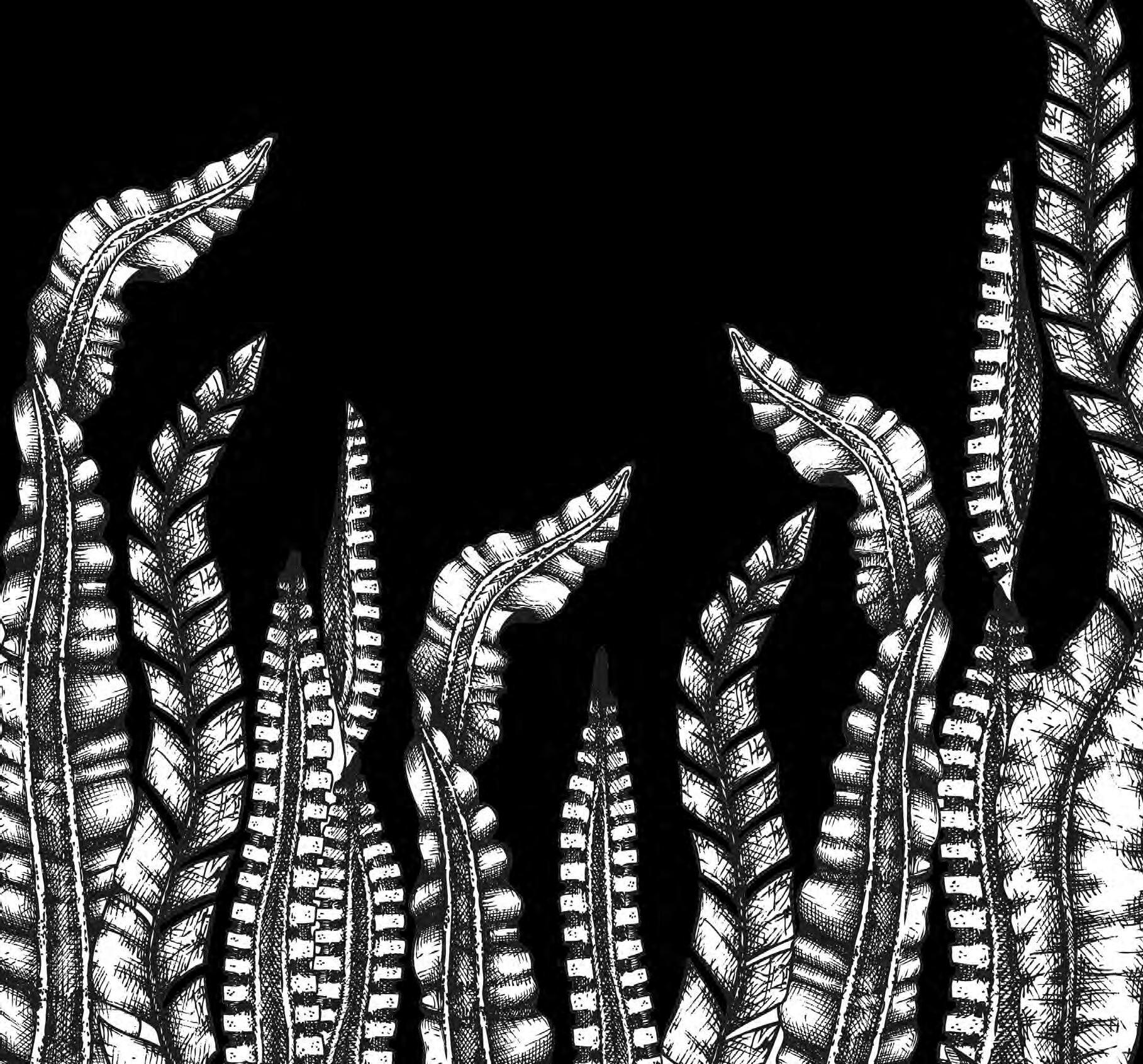
Schulte-Hostedde, A. I., Mazal, Z., Jardine, C. M., Gagnon, J. (2017). Enhanced access to anthropogenic food waste is related to hyperglycemia in raccoons (Procyon lotor). Conservation Physiology, 6(1), coy026.
https://academic.oup.com/conphys/ article/6/1/coy026/5037284
It’s no secret that the planet is now ‘human’. We – humans – have altered the earth to meet the demands of a booming population, creating so-called “urban landscapes”. But what does that mean for the wildlife that surrounds us? Evidence suggests that wildlife exposed to anthropogenic stressors are different from their non-exposed counterparts in various ways including stress levels, predator-prey interactions, and food intake. This may be particularly true for species which interact closely with humans, such as the raccoon ( Procyon lotor). Raccoons are notorious for their ability to break into garbage bins and feed on wastes. While they are an omnivorous species, human food waste is unlikely to be the most appropriate food for them. In fact, there is evidence that raccoon populations with access to anthropogenic food waste have more dental caries and poorer dental health. A recent study dug further in, and evaluated what access to food waste meant at a more physiological level. Researchers compared body mass, adiposity and glucose metabolism across three raccoon populations with varying levels of food waste access (high, moderate and low access – from city to remote farmland). Perhaps not surprisingly, raccoons with the greatest access to food waste were heavier than those with moderate and low access. Furthermore, glycated serum protein (an indicator for blood glucose) was also found in individuals of the high access population, indicating hyperglycemia. These findings indicate that there are physiological consequences to feeding on anthropogenic food waste for wildlife, though it remains to be seen whether these have long-term evolutionary consequences. What we do know however is that hyperglycemia has been linked to reduced reproduction and survival, but raccoons in cities tend to have larger litters, so perhaps we can expect more frequent visits from younger individuals?
K im Birnie-Gauvin, National Institute of Aquatic Resources, Technical University of Denmark
Varying light and temperature regimes show how important field responses may be missed in plant growth chamber experiments
Annunziata MG, Apelt F, Carillo P, Krause U, Feil R, Koehl K, Lunn JE, Stitt M. 2018. Response of Arabidopsis primary metabolism and circadian clock to low night temperature in a natural light environment. Journal of Experimental Botany 69, 4881–4895.
Matsubara S. 2018. Growing plants in fluctuating environments: why bother?
Journal of Experimental Botany 69,4651–4654.
https://tinyurl.com/y7ctcyzs
Classically we want everything controlled in an experiment, and for plant scientists growth chambers appear to provide the perfect approach. But the natural environment is infinitely variable, and that’s what plants actually experience. Probing this uncomfortable gap in our understanding, Annunziata and co-workers have been examining metabolic changes under naturally variable conditions, both within a day and day to day. Their work had already shown how variable natural light has quite different effects, with sophisticated management of starch reserves but impaired N metabolism. In new research reported in Journal of Experimental Botany (highlighted in the eXtra Botany section by Shizue Matsubara), temperature fluctuations add to the complexity, and metabolome analysis shows how fluctuation in both temperature and light effect systemic changes. But interestingly connectivity in central metabolism is not further weakened by the interaction of these two variables and in fact low night temperature reversed impaired N metabolism. The authors suggest that the diel mechanism operates better with co-variation in these variables, perhaps reflecting the situation in nature where irradiance and temperature often change together. The authors also looked at circadian clock genes, and here there was greater overlap in transcript abundance comparing the controlled and variable diel temperature regimes. Nevertheless, there were still differences, and overall the research shows that unless experiments better capture plant responses under natural conditions, we are likely to miss mechanisms and processes which are important under field conditions. While noting that ‘the combinatorial explosion of multiple varying factors creates a huge experimental space’, it is suggested that re-examining wellunderstood processes in near-field conditions may now help establish research priorities.
Jonathan Ingram, Senior Commissioning Editor & Christine Raines, Editor-in-Chief
Genome sequence of Jatropha curcas L., a non-edible biodiesel plant, provides a resource to improve seed-related traits
Jungmin Ha; Sangrea Shim; Taeyoung Lee; Yang Jae Kang; Won Joo Hwang; Haneul Jeong; Kularb Laosatit; Jayern Lee; Sue Kyung Kim; Dani Satywan; Puji Lestari; Min Young Yoon; Moon Young Kim; Annapurna Chitikineni; Patcharin Tanya; Prakit Somta; Peerasak Srinives; Rajeev K Varshney and Suk-Ha Lee. Plant Biotechnology Journal, DOI: 10.1111/pbi.12995.
https://onlinelibrary.wiley.com/doi/ abs/10.1111/pbi.12995
As a non-edible and drought tolerant biodiesel plant, physic nut or Jatropha is one of the most promising alternative energy sources for use in place of fossil fuels. In this article Ha et al. report a high-quality genome sequence of J. curcas var. Chai Nat, and provide an important platform for the functional genomics of the physic nut. A high-quality genome sequence and comprehensive transcriptome analysis may help in developing Jatropha elite cultivars to double seed oil production, and to facilitate evolutionary and comparative analysis in other plants, including the economically important crops: flax, poplar, rubber tree, cassava and castor bean. The authors sequenced the genome of J. curcas using Pacbio and Illumina platforms, resulting in an improved genome assembly compared with previously reported assemblies. The authors identified 48,162 genomic regions, with zero mapping depth Illumina reads covered by Pacbio long reads – explaining the fragmentation of previously published assemblies generated mainly using Illumina short reads. Based on this high quality genome sequence, along with comprehensive transcriptomic analysis of nine Jatropha species and nine different tissues of J. curcas, the genomic elements responsible for toxic compound biosynthesis, seed yield and oil content were emphasized. In doing so, the authors provide a valuable resource to facilitate functional and comparative genomics in the Euphorbiaceae family (Malpighiales order). These results may help researchers and breeders increase the energy efficiency of this important oil seed crop by improving yield and oil content, and eliminating toxic compounds in seed cake for animal feed.
Jim Ruddock, Managing EditorEfficient in planta gene targeting in tomato using geminiviral replicons and the CRISPR/Cas9 system
Dahan-Meir T, Filler-Hayut S, MelamedBessudo C, Bocobza S, Czosnek H, Aharoni A, Levy AA (2018) The Plant Journal 95, 5-16. https://onlinelibrary.wiley.com/doi/ full/10.1111/tpj.13932
Gene editing has revolutionised biology. Researchers can now swap promoters to change the expression levels of genes, test modified genes in their original genomic context, and test various transgenes in a fixed location, thereby minimising position effects. But the frequencies of gene replacement events were low (~1%), until Dahan-Meir et al . reported remarkable frequencies for both targeted gene mutagenesis and gene replacement in tomato. For targeted gene mutagenesis they used CRTISO which encodes carotenoid isomerase, and PSY1, which encodes a phytoene synthase. They chose these genes because the phenotypes are obvious –tangerine mutants (defective in CRTISO) have orange fruits and psy1 mutants have yellow fruits. The frequencies of mutagenesis were remarkably high, from 50-70% for PSY1 and 90% for CRTISO. For gene targeting they used a deletion mutant in CRTISO: 25% of the primary transformants had repaired the tangerine mutation and had red fruit. Getting gene targeting to work routinely at such efficiencies will undoubtedly require optimizing the system for various plant species, loci and cell types, but in tomato it is now feasible.
Sheila McCormick, Research Highlights Editor

RACCOON POPULATIONS WITH ACCESS TO ANTHROPOGENIC FOOD WASTE HAVE MORE DENTAL CARIES AND POORER DENTAL HEALTH
Below Schematic of Cas9-mediated gene editing of the tangerine tomato mutant.
Photo credit: Tamar Yadin


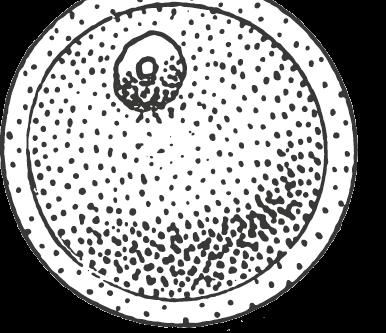
AB: How would you define computational biology?
GB: Computational biology makes use of computer-based tools to better understand complex phenomena in biology. This allows multiple aspects of a biological system to be integrated in order to better understand how they create complicated behaviours. This is distinct from the study of biological computation, which seeks to understand how organisms make calculations to control their development.
AB: How did you get into this field?
GB: By following my curiosity. My first scientific training was in plant physiology and molecular genetics. This taught me about fundamental aspects of plant growth and development. However, I found there to be limits as to the types of questions these approaches can answer. For example, a gene can be linked to a phenotype, such as the development of a flower organ. But everything between the molecule (or molecules) this gene produces and the creation of a new organ remained enigmatic. This detailed understanding of individual components did not explain how they would interact to create an integrated system leading to the emergence of complex phenomena, such as organs and behaviours.

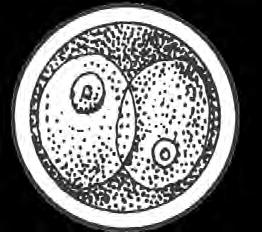
is also emerging. For example, we have found interesting parallels between how this occurs in plants and humanengineered computational systems. This provides opportunities for the exchange of knowledge across domains, and the ability to better understand how plants respond to the environment.
AB: Can your research1 be extended to other organisms?
GB: Yes absolutely! And vice versa. An exciting aspect of information processing research is the presence of conserved control mechanisms across diverse domains. For example, we recently demonstrated that the rate at which cells communicate in a dormant Arabidopsis seed impacts when the decision to terminate dormancy is reached 2 . A similar control mechanism is present in Red Harvester ants where communication rates impact decisionmaking about foraging behaviour and which task an individual performs 3 Engineered high performance computer architectures also modulate the communication rates b etween their processors to control the outputs of their computations. Biological and technological systems appear to both be controlling how they process information using similar principles.
I n an effort to understand the basis of this emergence, I began reading about complex systems and network science. It turns out this is a very young, rapidly developing and exciting field. A particularly interesting aspect is the identification of conserved organisational and control principles in complex systems that span across domains ranging from the social sciences and economics to physics, biology and many others. Learning about these principles has both expanded my view of biology and exposed me to a diversity of new quantitative tools and approaches that can be used to address fundamental questions about how plants work.
A c onservation of control principles in information processing across domains

BIOLOGICAL AND TECHNOLOGICAL SYSTEMS APPEAR TO BOTH BE CONTROLLING HOW THEY PROCESS INFORMATION USING SIMILAR PRINCIPLES.
SEB PROVIDES AN EXCELLENT PLATFORM TO HOLD MEETINGS ON FRONTIER MULTIDISCIPLINARY RESEARCH AREAS, INCLUDING AN OPEN AND FREE ENVIRONMENT TO HAVE PRODUCTIVE DISCUSSIONS.


AB: So how do plants make decisions?
GB: I don’t think we know the answer to that! While models can be made which provide plausible answers to this question, how this actually happens remains fuzzy. On the one hand we know how molecular networks are organised, and how they can generate outputs. In the case of multicellular plants, these networks are embedded across a large number of interconnected and communicating cells. The rate at which these networks operate in individual cells is asynchronous, and the speed at which they communicate their results to one another is unclear. How the collective calculations of communities of cells reach unified decisions represents a computational challenge known as the “majority voting problem”. The algorithms plants are employing to solve this problem remain unknown, and this represents a major outstanding question in the field.
AB: What are the main tools you use in your work?
GB: We use a combination of molecular genetics, 3D imaging, image analysis and network science. Work in the lab relies heavily on confocal microscopy and 3D image analysis. We prepare tissue samples by staining the cell walls with fluorescent dyes, then clarify the sample to make it transparent for imaging. The confocal microscope is then used to take a 3D image. This “z-stack” image is then analysed in a computer to identify how the cells are connected to one another. The cells and their connections are then turned into networks, which can be analysed using network science to understand how cells are organised.
AB: Do you have a favourite technique?
GB: I really appreciate what network science offers as a clever way of making complicated things simple. It is also a very young field that continues to undergo rapid development. I am finding it very exciting to be a part of this and to apply these techniques to plant science.
AB: What excites you most about computational biology?
GB: Making use of computers to understand how plants respond to their environment, while also using principles of computer science to better understand how information is processed in biology. These represent exciting research frontiers that are able to address questions that have not yet been fully explored.
AB: Of which achievement in your career so far are you proudest?
GB: Our recent study on the control of seed dormancy in Arabidopsis seeds2 . We identified a decision-making centre in the radicle of the dormant embryo, having specialised cells which each promoted and inhibited germination, respectively. We went on to show that this configuration enhanced the computational capacities of the seed so that they could process alternating high and low temperatures as a cue to break dormancy. This provides an exciting example of how plants can make use of their multicellular body plans to enhance their ability to compute information from their environment.
AB: You’re organising an exciting session, Computation in Biological Systems, at SEB Seville. What can we look forward to?
GB: The session brings together researchers examining information processing in diverse biological systems and across different scales. My hope is that we will explore this frontier area of research through presentations and stimulating discussions, and explore similarities and differences in how this is done in different contexts. We had a similar session last year in Florence on Multicellular Complexity, also bringing together researchers from diverse backgrounds, and this proved to be a great success. The SEB provides an excellent platform to hold meetings on frontier multidisciplinary research areas, including an open and free environment to have productive discussions.
1. T he Bassel lab http://www.georgebassellab.com
2. Topham et al. 2017 http://www.pnas.org/content/114/25/6629
3. G reene and Gordon 2003 http://www.nature.com/ articles/423032a
 Below George Bassel
Photo credit: Angus Robinson
George Bassel, Professor of Plant Computational Biology at the University of Birmingham, talks to plant physiologist Angie Burnett
Below George Bassel
Photo credit: Angus Robinson
George Bassel, Professor of Plant Computational Biology at the University of Birmingham, talks to plant physiologist Angie Burnett
“It’s fulfilling to work on something I’m so passionate about,” says Jenni Prokkola, the new deputy convenor of the SEB Animal Section’s Endocrinology Group
and postdoctoral fellow at the University of Liverpool.
As well as co-organising a physiology and behaviour session at this year’s Annual Meeting, Jenni is co-organising a session at next year’s meeting in Seville titled ‘Fuelling the fire of life – evolutionary physiology of oxygen supply in vertebrates’.
AE: Jenni, how did you first get into animal physiology?
JP: Oddly enough, animal physiology was not one of my favourite topics as an undergraduate student. However, I was doing my master’s thesis on evolutionary ecology of mealworm beetles when I realised that, to understand ecological change and how natural selection has affected biodiversity, I should also understand more about physiological mechanisms. I was happy to learn much more during my PhD in the group of Mikko Nikinmaa at the University of Turku in Finland. Functional genomics was also an important tool for my research, and my second advisor Erica Leder helped me a lot in understanding how these tools work.

I APPRECIATE THE IMPORTANCE OF HORMONES IN REGULATING ALMOST ALL PHYSIOLOGICAL PROCESSES; IT REALLY CAN’T BE OVERLOOKED
AE: Which projects are you currently involved in?
JP: I’m still involved in some studies on bat ecoimmunology and White Nose Syndrome, which is a devastating disease in North American bats. I am also continuing my work with the project of Anssi Vainikka at the University of Eastern Finland on population genetics, migration behaviour and fishing-induced selection in brown trout. I’m now also collaborating with the project of Andy Cossins on the cold responses of common carp and using ribosomal footprint profiling in Liverpool. My own main project in collaboration with Andy Cossins and Michael Berenbrink, funded by the Finnish Cultural Foundation, focuses on understanding plasticity in the oxygen supply cascade using myoglobin-deficient zebrafish. This provides me with the opportunity to gain experience in the development and use of transgenic fish, which is a very new and exciting approach for me.
AE: What have been the defining highlights of your scientific career so far?
JP: I enjoy the day-to-day grind of lab work, writing and project management, but some of the highlights definitely include meeting and forming networks with some incredibly inspiring people, especially when I have been co-organising events such as the salmonid researcher meeting NoWPaS and SEB Annual Main Meeting in 2018. I also enjoy being involved with SEB Animal Section, where I get to contribute to how the Society helps other early career researchers.
AE: That’s right, you co-organised a session on the pace-of-life syndrome (POLS) at the SEB Annual Meeting this summer. What was the inspiration behind this session and were you pleased with the range of talks?
JP: The idea for the session was born when I began working on brown trout behaviour and read about the POLS concept, then started thinking about applying it to my own experiments. As it seemed such a nice way to combine themes that are always presented in SEB meetings, I suggested to my co-workers to propose a session – but we then found out that
I WOULD ALSO LIKE TO SEE EARLY-STAGE RESEARCH CAREERS TREATED AND COMPENSATED MORE LIKE OTHER PROFESSIONAL CAREERS

Tommy Norin and Neil Metcalfe had hatched the same idea and so we organised the session together! The day was very successful in my opinion, thanks to the great diversity of talks, which all approached the same theme using modelling approaches or different organisms. The whole experience was encouraging and definitely worthwhile.
AE: You recently became the new deputy convener for the SEB Animal Section’s Endocrinology Group, what makes the SEB a good fit for the field of animal endocrinology?
JP: I joined the Animal Section as a deputy for Nic Bury who is the convenor for the comparative endocrinology theme. Although my research only partially overlaps with endocrinology, I appreciate the importance of hormones in regulating almost all physiological processes; it really can’t be overlooked. Within the SEB, researchers from all areas of organismal biology have the opportunity to interact and learn, which is really valuable for such an allencompassing research field as endocrinology. Similarly, SEB meetings have been very useful for myself and I have always learned important things and made great connections in the meetings.
AE: Are there any other areas of research you would like to explore in the future?
JP: Yes and no. In some ways, being interested in molecular and evolutionary biology, ecology and physiology in various species means that having a better focus could be more efficient, but I don’t think I can stop stepping into new fields. My latest project uses biological imaging, which I haven’t had the chance to work much
with before, and which might well stay with me in future projects. I’m also fascinated by genome duplication events, which provide huge opportunities for the evolution of new physiological abilities, so hopefully I will get to do more research on these.
AE: What do you think are some of the challenges faced by today’s early career researchers that need to be addressed?
JP: I come from a place of very many privileges, and I think it is really important to realise that early career researchers still face quite diverse challenges. I would also like to see early-stage research careers treated and compensated more like other professional careers, because at present it is still a straight-up financial burden to the people who wish to embark on a science career due to the demands for moving, self-paid expenses or lower salaries. Depending where you live, there are also large discrepancies in how family leave and other personal leaves are allowed or compensated, and every country has room for improvement. Perhaps a specific challenge that might be universal is that the supervision and mentoring provided for ECRs should be more tailored to their needs; it is clear to me that all of us need a lot of help with our careers and it has become more difficult to find safe employment now than it has been in the past. It is also important that underrepresented minorities (URMs) receive support and that the people in the majority are aware of the challenges facing URMs which may have been invisible to themselves.
AE: Finally, having spent a lot of time researching both fish and bats, which has been your favourite to work with?
JP: After gaining some very interesting and valuable experiences studying bat biology with Ken Field, DeeAnn Reeder and Thomas Lilley (my spouse) at Bucknell University, I still found my real calling was with fish - they live under water, how can you beat that?! So, then I applied for a post-doc position in Finland where I could focus on salmonids, which have long been my passion and contain my favourite species, Arctic char and brown trout. They have complex life cycles and genomes and great physiological flexibility. We need to understand them better in order to conserve them and to learn more on their adaptation and evolution, especially in the face of climate change. It was also fun to work on a well-known and valued species and to have some real-world applied research goals, including the development of better fishing and fish stocking practices, as well as scientific ones.
Opposite left Jenni Prokkola Photo credit: Katja AnttilaANIMAL WELFARE AND SCIENCE:
TWO BEST FRIENDS 50
WORKING THE CROWD: HOW TO TEACH AT SCALE 52
SENSE ABOUT SCIENCE INTERNSHIP 54
DIVERSITY DINNER –THE ITALIAN GRUB 55
MEET THE ACADEMICS –HOW DO I ADVANCE IN ACADEMIA? 57
TRAVEL GRANTS TO GO .......................58
HOMEWARD BOUND 2017-18: LIFE AND LEADERSHIP LESSONS IN ANTARCTICA ...62

Do you work with animals in your research? If so, the SEB+ session in this year’s Annual Meeting was for you! Though animal welfare in research is a prickly topic, it was discussed in a constructive and supportive way, designed to guide animal researchers in ways to improve their animal experiments.

Do you have help with maintaining your animal welfare approaches in your own organisation?
“Yes!” asserted Susanna Louhimies from the European Commission, Belgium. She explained the roles of Animal Welfare Bodies (AWBs) in research taking place in the European Union (EU). “As of EU Directive 2010/63/ EU, AWBs became mandatory in institutions handling animals for breeding and animal experimentation,” she said. “These bodies are responsible for overseeing the application of the Three ‘R’s in their institution.”
T he general function of an AWB is to maintain awareness of animal welfare. “The AWB is the part of the institution continually asking itself “Is our animal breeding and experimentation as optimal as possible?”,” she explained. Furthermore, she emphasised that this focus on animal welfare does not need to hamper your research. In fact, proactively consulting with the local AWB from the start can focus you on using the minimum number of samples required for your study, making it more efficient and better designed.
The Three ‘R’s of animal welfare in research are defined as reduction, refinement and replacement; in other words, using as few animals as possible for the best scientific gain. Although this always sounds ideal in theory, it is often seen as an obstacle for project planning, due to the tedium of extra paperwork for researchers.
T his special SEB+ session therefore encouraged us to approach the issue from a different angle completely: viewing the animal welfare process not as a problem, but as a tool to improve your scientific investigations. The speakers gathered in this session talked about why working with regulations and regulatory bodies can have big benefits for your scientific output.
Teresa G. Valencak, from the University of Veterinary Medicine Vienna, Austria, set out to debunk the idea that animal welfare and scientific research conflict with each other. “In reality, the two concepts overlap greatly; it is actually the implementation of the two that needs to change,” she suggested. How so? She continued: “In many institutions, students are receiving insufficient training in animal handling, leaving it to the technicians; this means that they can remain ignorant of the animal ethics of their work.” Not only does this increase animal suffering, she explained, but also leads to missed opportunities for scientific discovery.

O ne example how improving animal welfare leads to scientific benefits involves Golden hamsters. “Unexpectedly, if you shave the back of a nursing Golden hamster mother, she produces more milk,” Teresa enthused. “This is because this lets off excess heat when she lactates, and decreases her stress levels; perfect if you are studying the underlying physiology”. Similarly, Teresa related, housing Mongolian gerbils socially rather than isolating them had a double benefit: “Not only did it decrease
the stress levels of these social animals, but we discovered that the males help in care of the offspring as well as the females.”
Teresa’s examples showed that a stronger culture of animal care across all employees in the research organisation has ethical and scientific benefits, as she concluded: “Let’s get more students caring for their experimental animals, not just for their experiments!”
Lauren E. James from Aarhus University, Denmark, presented her work regarding the more exotic species that are less frequently used in research. “While most of the ethical, scientific and public attention to animal welfare is devoted to the ‘cute and fluffy’ segment of the animal kingdom (think mice, rats and cats), we know less about optimal handling techniques for snakes, lizards and other exotic animals,” she explained.
A common aspect of animal handling is reducing pain with analgesics and anaesthetics. Lauren’s research focuses on snake species, which are under-studied in this respect. “We still have little idea about the best anaesthetic and analgesic regimes for these species, so I undertook projects to identify the best strategies for these species,” she said.
Many scientists using animals present their project proposals to an ethics committee or Animal Welfare Body. As a committee member, Penny A. J. Hawkins from the Royal Society for the Prevention of Cruelty to of Animals (RSPCA) wants to champion good two-way communication with researchers.
Understanding what your committee really wants to know is key. “Explain what will happen to the animals, using comprehensible language. Be prepared to discuss the animal’s life experience and explain how you will reduce suffering at every stage,” Penny advised. Scientists sometimes feel intimidated by committees, and ‘lay’ members can also be wary of asking questions - but talking about animal welfare, with input from vets and animal technologists, can often identify common ground.
T he final note of Penny’s talk emphasised how scientists benefit from ethics committees. “They can provide valuable advice at the planning stage,” she counselled. “Work with your committee from the start, and you will feel much more confident that any welfare issues will have been addressed, which also means better science.”
seen as a symptom of a lack of respect for the vital role of animal technician jobs in labs.
T he key way to improve this problem, Tania suggested, is to employ long-term technicians with better experience with the facilities. “Not only this,” Tania continued. “Communication between the technician and the experimenters is key in both academia and industry.” After listing key ways to better harness animal research, such as better health monitoring in transit and environmental enrichment, she concluded: “This better culture of care, as well as conserving vital technicians, contributes greatly to the science we are producing.”
L auren’s presentation highlighted her extensive work regarding the best anaesthetics and analgesics for pythons. Furthermore, she highlighted crucial differences in applications: “Many reptiles can actually hold their breath for a long period of time, meaning that trying to apply anaesthetics through inhalation often gets unexpected results.”
I n conclusion, Lauren advocated a holistic procedure for minimising animal suffering in reptiles. In a similar vein to the other talks, she explained the scientific benefits of this focus:
“Minimising animal suffering is not just an ethical consideration; animal stress responses also can hamper our studies on their underlying physiology, so minimising this stress improves the science too”.
A talk by Tania Boden, UCB, UK, shed light on how to use animal technologists in the best way possible. These employees, such as animal technicians, are those that maintain the animal holding facilities and provide all of the basic needs for the experimental animals. Tania continued: “These people are hugely important for improving animal welfare, as well as our science.”
O ne big problem with animal technology positions is that there is a high turnover.
“It is notable that many institutions use cheap temps to clean out the animals, who are usually leaving within one year,” related Tania. “The problem here is that the institution loses the animal technology knowledge and experience that those with permanent positions possess.” This was often
The common theme of the talks of the SEB+ was dispelling the misconception that every regulatory body, and animal welfare in general, is there to hamper the researchers. In fact, the AWBs in your institution are there to help you design better and cleaner experiments, consistently asking yourself if you can do better. So, the next time you are facing a committee regarding animals in your research, remember to use this chance to challenge and improve your science, rather than fight it!
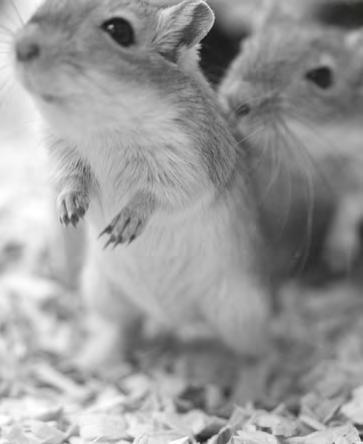
Above
Housing gerbils more ethically helped the carers realise that male gerbils help to care for the offspring
Photo credit: Teresa Valencak
Opposite left Jonathan Smith
Photo credit: labiotech.eu
Finding new and effective strategies for teaching biology to students can often be difficult - especially when you’re outnumbered two hundred to one. The ‘Teaching Biology at Different Scales’ session organised by Katharine Hubbard and Lucy Tallents featured talks by expert educators on how to handle the issue of large class sizes, including an interactive workshop that encouraged the discussion of the challenges and opportunities associated with teaching biology at scale.

As enthusiastic educators, Katharine Hubbard (University of Hull, UK) and Lucy Tallents (University of Oxford, UK) wanted to organise a session highlighting the best strategies for teaching large cohorts of students. “Teaching large classes is an issue that affects teachers of all disciplines, and we hoped this session would be useful for all sorts of educators,” explained Katharine. “Lucy does most of her teaching online and I do most of mine in person, so between us we had a range of topics and ideas to discuss.” Katharine and Lucy were especially keen to provide this session for the more research-focused attendees of the SEB Annual Meeting, who they feel are an ideal audience for these teaching tips and strategies: “We love the annual SEB conference as it is a great place for bringing together people that are passionate about learning and teaching.”
What does a large class size mean to you? 60, 100 or 400 students? These are just some of the varied responses given by attendees when asked this question by Katja Strohfeldt, Dean of Teaching and Learning at the University of Reading. “I personally find this question fascinating,” said Katja. “Most of the literature refers to 100 students as a large class, but I remember being taught in a class of 800!”
According to Katja, large class sizes can’t be so easily classified by the number of students, as the real challenge of a ‘large’ class comes by having to upscale and rethink your teaching style to work beyond cohort sizes that you are personally comfortable with; a size that is likely to vary from teacher to teacher. But once you’ve identified what a large class size means to you, how do you go about adjusting your teaching style to match their needs?
T hankfully, Katja has got you covered! During her talk, Katja introduced us to the
‘Large Class Education Toolkit’1, a free and publicly available resource that she created in order to help tackle some of the common issues that cropped up during the session. The key aims of Katja’s toolkit are to promote inclusive and evidence-based teaching that is easily accessible and understandable, supported by real-life case studies and profiles of University champions that help students identify with role models within their faculty.
During her research for the toolkit, Katja identified not only the best tips and tricks for handling large classes, but also organised them into categories by their time commitments. After speaking with her fellow academics, she found that many of her colleagues were interested in learning how to better handle large class sizes but felt that they lacked the time to research these strategies for themselves, so Katja aimed to provide a range of tips to suit any time commitment. “I wanted to create something that would be easily accessible and clearly structured to demonstrate that only a small time investment is needed to utilise these tools,” she explained, adding that she also included grander but more time-consuming ideas for more adventurous teachers. The easier-to-implement and less time-consuming strategies include the use of engaging teaching aids such as online classroom polls and ‘pencasts’ that allow students to see visual text and diagrams being drawn in real-time. Some of the more ambitious strategies include constructing practical lectures based around problem-based learning or ‘flipping the classroom’ by taking a more interactive approach to teaching, which can be useful for keeping large classes stimulated and focused.
Speaking to her after the session, Katja was very happy with this opportunity to share her toolkit with so many enthusiastic educators:
“Large class sizes are very common in biology courses and biology teachers are therefore one of the prime target audiences for this toolkit,” she said. “I really enjoyed sharing my thoughts and ideas at the SEB Annual Meeting and receiving encouraging comments from people from all over the world”.
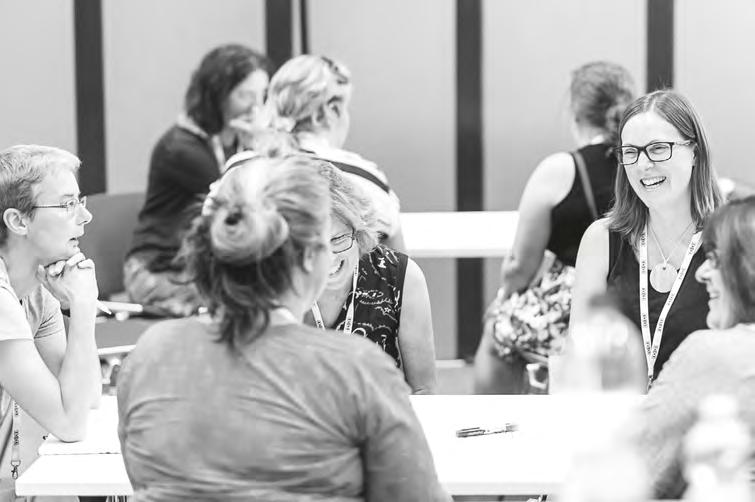
Not limiting themselves to simply organising the session, for one hour in the afternoon, Katharine and Lucy gathered the attendees into small discussion groups for an interactive idea-sharing workshop on the topic of teaching large cohorts. Some of the most frequently mentioned issues were those of student isolation and anonymity, which can only become more amplified in large class sizes. Thankfully, the table discussions provided useful insights in how to tackle these challenges. “A major theme that surfaced was the need for more student and teacher ‘personalisation’ in classrooms,” explained Katharine. “It is important that students don’t feel lost in the crowd, so having a continuous familiar member of staff that they can rely on for both work and pastoral problems makes a big difference,” added Lucy. A nother theme that arose frequently throughout the workshop was the use of online learning environments. While these can provide easy access to resources and discussion forums, they also run the risk of making learning even more detached and impersonal if not managed properly. However, many attendees found that that if regularly updated by a member of staff, they can be very useful in creating a coherent shared learning environment between classroom and computer screen. “There are many web and phone apps that can help to increase student interaction when working with large class sizes,” explained Lucy. “They can transform a student’s experience of what lectures can be, so it was great to see that so many people were using these tools.”
A final take-away message from the workshop was the importance of maintaining pastoral care for students. It’s one thing to ensure that students are being educated but it’s another to ensure that they’re engaged and
molecular biology concepts in their own time – and the seed for the ‘Molecular Methods’ app was planted!
However, it would be wrong to give all the credit to Nicola and Pam for developing this app, as much of the work was done in collaboration with biology and computing science students; something that Nicola and Pam both recommend for those interested in pursuing similar digital ventures. “We strongly recommend collaborating with students and graduate teaching assistants when developing apps and games,” explained Nicola. “It not only enriches the final product as the students are able to influence the content and design to suit their needs, but it also enhances their practical experience of key employability skills.”
comfortable with their learning environment.
“Regardless of class size, some students might feel confused and isolated without clear channels of communication with staff,” said Lucy, adding that this is even more likely for international students, or those that are parttime or living far from campus. “Interactive group experiments and informal learning spaces give students opportunities to bond and familiarise themselves with each other, as well as learning how to collect and interpret their own data,” concluded Lucy. The whole suite of strategies and ideas shared during the workshop were uploaded to a digital Padlet whiteboard2 which can be accessed by anyone looking to improve their skills as an educator.
Taking the idea one step further, Nicola and Pam wanted to build on the app and create an even more interactive and rewarding learning experience. This experience came in the form of ‘PrimeIt’, a mobile game that resulted from a student competition centred around designing games that would help other students understand challenging aspects of the molecular biology module. “The winner was a third year Genetics student who produced an incredible concept and design,” explained Nicola, adding that both the app and the game have seen great success and feedback thus far.
“The app has 17,000 downloads to date and the game now has over 4,000 downloads, both with 5 star reviews across the board.” Looking to the future, Nicola and Pam aren’t ready to slow down and have even more adventurous ideas in their sights. “Virtual Reality is a digital tool that is now being developed for education purposes,” Nicola explained. “We have not used this ourselves yet but would like to in the future”.
1. https://www.reading.ac.uk/web/files/cqsd/V4_Interactive_ Education_Toolkit.pdf
2. https://padlet.com/lucy_tallents/SEBEd2018
In today’s technologically-concentrated culture, students can easily become bored or distracted when it comes to learning in large cohorts – so why not fight fire with fire? Nicola Veitch from the University of Glasgow presented the work that she and Pam Scott have put into developing digital apps and phone games for enhancing the student learning experience.
Nicola and Pam first logged on to the idea for their digital educational tools while teaching molecular biology to large cohorts of students.
“We were looking for an innovative way to deliver online support resources and had seen some education research on the increased use of mobile technology”, explained Nicola. “We wanted something the students could access at home, on the go, and in the lab, so mobile apps seemed to fit the bill.” After speaking with students through questionnaires and focus groups, they found support for the creation of an app that would help them to understand key
IT IS IMPORTANT THAT STUDENTS DON’T FEEL LOST IN THE CROWD
Opposite page
Alex Evans
Above Workshop attendees
Photo credit:
Simon Callaghan
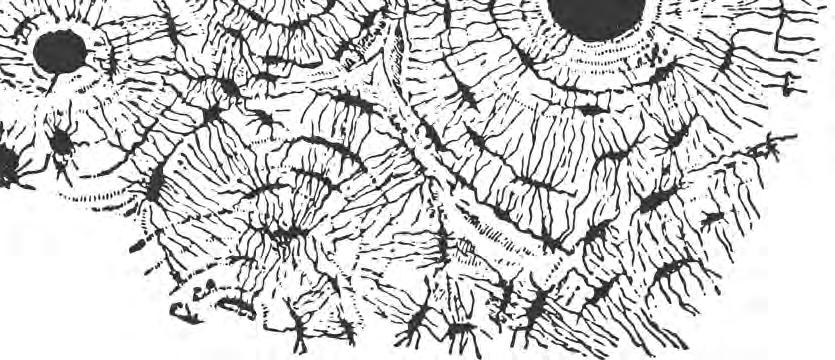
Last summer I had the amazing opportunity to spend two months at Sense about Science (SaS), a charity organisation leading the way in tackling the misrepresentation of science and evidence.

Ijournalists and many others had overcome.
I n the day to day running of the office, keeping up with the daily news looking for misrepresented science stories really opened my eyes to how our research is portrayed to the public, both good and bad. So any experience you can gain in the area is invaluable. Another project I was involved in was Voice of Young Science – a network of early career researchers changing the way the people view science by engaging with the public and taking part in initiatives such as Ask for Evidence. If you’re passionate about science and evidence, these are great campaigns to get involved with.
Since completing my placement I have continued working with SaS. In November last year I attended the award evening for the John Maddox Prize. Meeting the winner and several nominees whose lives and careers I had spent so long researching was a slightly surreal experience, but it was uplifting to see the increasing support for people who are fighting for their scientific cause. I also attended the peer review workshop that SaS run last October explaining what peer review is and why it is important for both scientists and the public to engage with this process. As a young researcher, it was an informative session about a process I hope to contribute to in the future and it also inspired me to write a blog about how and why PhD students should get involved with peer review.
first got involved in SaS after attending one of their free ‘Standing up for Science’ workshops in Manchester. This was a discussion, led by a panel of researchers, journalists and policy makers, about how to effectively communicate science to the public. This ranged from national press releases and local science stories, to how we can use social media to bring discussions about our research into the public domain. It’s the last point that really stuck with me - we can all promote our science on social media, and I think increasing public exposure and discussion around scientific research is a positive step forward. Even if you never expect to be in the media, being able to communicate your research to non-scientists is such a necessary skill to have. It was at this point I finally signed up to Twitter! A fter being fascinated by the work SaS was doing, I sought out an internship as part of my PhD studentship. The placement turned out to be such an enjoyable experience, in part due to the main project I was involved in - the 2017 John Maddox Prize. This award is given every year to someone who has promoted sound science or evidence and faced hostility in doing so. It was my job to research each of the nominees and create a summary of how they had fulfilled the criteria for the prize so the judges could choose a worthy winner. What I didn’t expect from the experience was to become immensely inspired for my own research after reading about all the accomplishments and hurdles that these scientists,
A s a researcher at the start of my career, SaS has played an integral part in expanding my knowledge and experience of science communication. They have some fantastic resources for helping researchers engage the public and communicate their work as well as offering a great support network. I would definitely recommend other students to get involved and I really encourage you to go to the workshops, especially as SEB members can apply for free priority places.
Diversity Dinner, the popular dining and discussion session held every SEB Annual Meeting, took on an appropriately Italian theme in Florence this year, with a debate centred around the Italian pasta company Barilla.
As we learned that evening, even well-established companies with well-known products struggle with maintaining diversity in their corporate structure, and the experience of Barilla is a fascinating example of how to address this problem.
SEVERAL
WHOSE LIVES AND CAREERS I HAD SPENT SO LONG RESEARCHING WAS A SLIGHTLY SURREAL EXPERIENCE
1. http://senseaboutscience.org/
2. http://senseaboutscience.org/voys/
3. https://hub.wiley.com/community/exchanges/discover/ blog/2017/12/06/peer-review-for-early-career-researchersyour-basic-questions-answered
The host of the session, Teresa Valencak, announced the invited speaker, Kristen Anderson, the Chief Diversity Officer for Barilla. With a background in Chemical Engineering in industry, Kristen presented a candid talk about the family-owned company, which was founded an incredible 141 years ago. “The company sells traditional Italian food and culture,” Kristen related. “Although its strongest market is Italy, it is expanding worldwide.” Barilla is thus expanding from its Italian roots, requiring adaptation to its international market.
I n the past, the traditional family background of Barilla has caused conflict with the international focus on diversity.
“Five years ago, Guido Barilla, chairman of the company, infamously declared on an Italian radio show that he wouldn’t feature a ‘gay family’ in Barilla’s advertising, due
to his beliefs,” explained Kristen. Although there was little reaction to these comments in traditional Italy, the global media was scandalised, causing bad publicity and calls for boycotts of the company.
As the 2013 scandal swept through news outlets, Barilla’s management, including the family owners, took steps to change the company’s culture and image. The Chief Executive Officer (CEO) of Barilla in particular, Claudio Colzani, used this incident to spur the company’s shift towards diversity and inclusion. “Like many companies in Italy, Barilla’s employees were predominantly traditional Italians who wouldn’t mix with other groups,” recalls Kristen. “We thus formed a special committee for diversity and inclusion, and launched internal initiatives raising employees’ awareness of disability, Lesbian/ Gay/Bisexual/Transgender (LGBT), gender, multicultural and generational diversity.”
Kristen emphasised the scale of the changes undertaken by Barilla. “Just changing the public relations wasn’t enough; our initiatives strove to completely reform the company’s culture and image.” For example, Barilla have collaborated with large diversity nongovernmental organisations for advice, implemented flexible working locations for disabled employees and started initiatives on improving the gender balance of the workforce, an especially large challenge for Italy with its historically male-dominated working culture. Kristen continued: “We aim to be a positive example for diversity and inclusion; these efforts aren’t so common in the corporate world.”
“ Did these efforts change the company
culture within the workforce?” This important question came from a member of the audience during the talk. To this, Kristen honestly replied that the beginning stages have been slow. “Our strategies meet some friction, depending on the cultures we address,” she explained. However, she also noted that Barilla’s productivity was climbing, indicating that these initiatives may be having a positive effect on the company.
After this provocative talk, the audience members discussed the best ways to promote diversity in their own organisations. Several suggested promoting diversity and different languages on social media. However, the real challenge is to engage those who, for example, aren’t interested enough to attend corporate diversity sessions. “One simple way is simply encourage normal interactions between people of different walks of life,” Kristen remarked.
K risten’s talks and discussions showed that, in terms of diversity awareness, Barilla has come a long way since its scandalous wakeup call in 2013. Though ongoing, its trajectory shows that we can’t take inclusion for granted; it requires effort and has clear benefits, as Kristen concluded: “Under the right circumstances, inclusion actually i mproves an organisation’s productivity, morale and even environmental impact; it is worth the effort.”
1. P ublic Engagement: a Practical Guide http:// senseaboutscience.org/activities/public-engagement-guide/ 2. VoYS Network: senseaboutscience.org/voys
Below Paige PanterALGAL MODEL SYSTEMS ON THE RISE: UNDERSTANDING AND EXPLOITING THE ALGAE TO LAND PLANT TRANSITION
30 JUNE 2019
SEVILLE, SPAIN
SEBIOLOGY.ORG #SEBALGAL


ORGANISED BY
• HENRIK BUSCHMANN (UNIVERSITY OF OSNABRÜCK, GERMANY)
• ANDREAS HOLZINGER (UNIVERSITY OF INNSBRUCK, AUSTRIA)
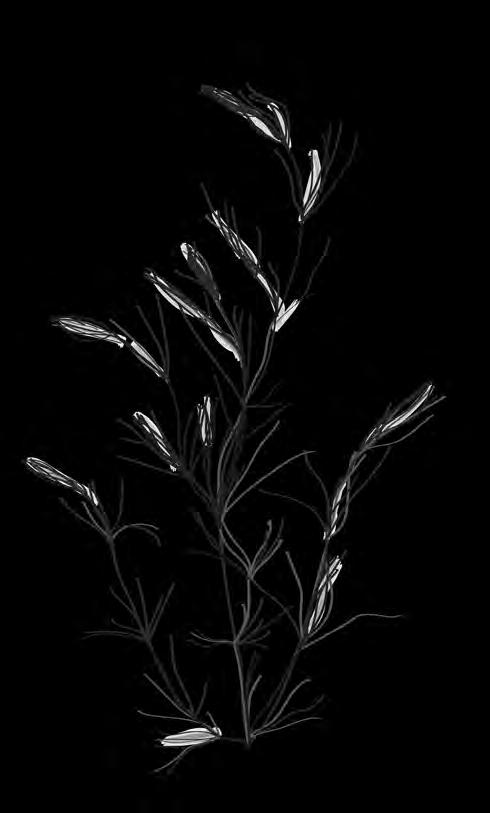
INVITED SPEAKERS
• PIERRE-MARC DELAUX (UNIVERSITÉ DE TOULOUSE, FRANCE)
• DAVID DOMOZYCH (SKIDMORE COLLEGE, USA)
• LINDA GRAHAM (UNIVERSITY OF WISCONSIN, USA)
• ZOË POPPER (NATIONAL UNIVERSITY OF IRELAND GALWAY, IRELAND)
• STEFAN RENSING (UNIVERSITY OF MARBURG, GERMANY)
• HIROYUKI SEKIMOTO (JAPAN WOMEN’S UNIVERSITY, JAPAN)
• BURKHARD BECKER (UNIVERSITY OF COLOGNE, GERMANY)
• MARTHA COOK (ILLINOIS STATE UNIVERSITY, USA)
The Meet the Academics lunchtime session of the SEB Annual Meeting allows an intermixing between young, early-career researchers and those at later stages of their careers. Hosted by George Littlejohn, University of Plymouth, UK, this year’s session was a valuable opportunity to pick the brains of a diverse mix of researchers.
Here, George asked key careers questions at the outset and the crowd contributed ideas, all of which provided insight into finding your dream academic career.
In spite of low rates of researchers gaining positions in academia, the first general advice for postgraduates and post-docs was to stay positive and optimistic. An academic explained why: “We discussed some depressing statistics, but in fact, hiring can be very circumstantial; sometimes you need to be in the right place at the right time.” He further suggested that the moment you get a foothold into an institution, your chances are much better for landing a position.
When a PhD student is coming to the end of the project, searching for a post-doc position is unlikely to be a high priority. However, this is extremely important. “Start looking around 18 months in advance,” one audience member cautioned. “Contact supervisors and see if they have post-docs that they have not even advertised yet.” Amidst the tumult of experiments and theses, taking this step early on is critical for securing a good postdoc position.
A nerve-wrecking aspect of finding academic positions is how to find support via networking.
A key method for networking is the interview stage in an application, your best chance to steer the application your way, as another attendee advised: “My one jewel of advice: when you get the interview, chat with the people there, even the ones who are not in the interview itself; this is your best chance to control the application process.” He also cunningly suggested commiserating with collective worries over grants: “Academics are grant hypochondriacs; a great way to approach us is to get talking about the money we need!” A nother academic highlighted how important it is to ‘find your thing’. Although it is easy to stay within the field of the supervisor, it pays off to find your own direction, with a supportive supervisor on board. “In the early days of my career, I stuck to the work that
I was familiar with, and didn’t progress,” he explained. “It took a new investigative ‘niche’ to really get my own research group going.” This was echoed by another attendee, who valued collaborations in candidates: “Your ability to work independently and with others is what we look for in an applicant.”
Mentors and sponsors help your careers, but in distinct ways, as one attendee pointed out. A mentor is someone who specifically coaches you in the process, as she continued: “It is key to have a recently established mentor, and a mentor who has been present for a long time, possibly a chair, as both help you make crucial decisions.” In contrast to a mentor, a sponsor is a person with influence, who is able to ‘namedrop’ your reference and have a direct effect on your career. “Although they have distinct roles,” the attendee concluded, “it is vital to have both forms of support.”
The session provided a useful resource for younger academics wanting advice in advancing their careers. The modern trend in academia is also shifting towards less traditional methods of advancing your career, such as social media and outreach. Together with the proactive networking, interview and mentoring suggestions, these methods will greatly help early-career researchers land themselves their dream academic job.


Francesco travelled to Montpellier, France this summer to attend the “International Plant Molecular Biology Congress 2018” and present his work entitled “Investigating sub-cellular dynamics during immune responses in wheat using advanced bio-imaging approaches”.
food biotechnologist who developed an interest in host-microbe interaction during his honours MsC Degree at the University of Perugia in Italy, Francesco is currently doing his doctoral studies under the supervision of Dr. Mike Deeks and Dr. Stefano Pagliara in the Department of Bioscience at the University of Exeter.
The Food and Agriculture Organisation published a report in 2009 suggesting that by 2050 agricultural production will have to increase by 70% to meet projected demand. In order to solve this issue, there is currently increased interest towards critical fields such as the investigation of early mechanisms of plant defence towards harmful phytopathogens” says Francesco.
F rancesco’s research focuses on understanding early mechanisms of plant resistance in wheat, using as a model the phyto-pathogen Zymoseptoria tritici main causal agent of Septoria tritici blotch “Capable to cause up to 40 % annual yield loss, Zymoseptoria tritici is a hemibiotrophic pathogen, devoid of the presence of appressoria or haustoria, and able to penetrate the host tissues via stomatal cavities following hyphae germination” explains Francesco. “Nonetheless, the role of the immune system in pathogen perception during the early phase
of interaction is still uncertain. A detailed understanding of molecular mechanisms involved in fungal detection may lead me to the identification of the invasion strategy of the fungus and the key role of the early immune system in plant resistance.
T he IPMB congress is a triennial meeting gathering 1000-1200 plant molecular biologists from all over the world since 1984 and represented the opportunity for great scientists, experts in the field, to share ideas, present the latest outcomes of their research and advertise opportunity in their laboratory.
T he conference demonstrated the importance of developing multi-disciplinary approaches to face current issues such as climate changes and population increase and therefore the impact on food demand. Climate change and fungicide resistance represent a critical aspect to Food Security and the IPMB2018 congress gave me the great opportunity to increase my interest in Molecular Plant Pathology, identifying the key role of plant receptors involved in early mechanisms of pathogen detection” says Francesco. “This increased my interest towards the field leading me to enhance my hunger for knowledge in plant biology.
Travelling alone gave me the opportunity to engage with other students and staff and expand my network and connections. I had the great opportunity to meet international group leaders in Plant Pathology such as Dr. Barbara De Coninck from Division of Crop Biotechnics, KU Leuven, Belgium and Prof. Jonathan Jones from The Sainsbury Laboratory, Norwich, UK.
F rance has a high reputation for its cuisine and indeed the food and beverages during the conference were absolutely great. The gala dinner also gave me the opportunity to meet international Ph.D researchers and postdocs and combine oysters with a glass of champagne.”
Lisa travelled to Woods Hole, Massachusetts, USA in August to attend the “Molecular Mycology: Current Approaches to Fungal Pathogenesis” course.
L isa’s research focuses on Candida species, with particular regard to the hostyeast interaction, which she has studied with different and complementary approaches including generation of null mutants by both site directed deletion and CRISPRCas9 mediated editing; heterologous protein expression; biophysics techniques such as Nuclear Magnetic Resonance spectroscopy and fluorescence polarization-based assays. Lisa attended the course to improve her technical skills, experience working with different fungi and also to expand her network of connections.
“This increased my interest towards the field leading me to enhance my hunger for knowledge in plant biology”
Francesco Valente
“The network of mentors that we may rely on for guidance in our professional (and personal) development expanded”
Lisa Lombardi
“ The Molecular Mycology (MOMY) course allowed 18 international students to work together and learn more about the current approaches that are available for studying fungal biology. Twenty different faculty members alternated for 2 weeks, providing us with scientific guidance and helping us think about our career development.
Under the supervision of the course directors, Dr Damian Krysan from University of Iowa, and Dr Xiaorong Lin from University of Georgia, we alternated lectures in the morning and experimental activity in the afternoon. Speakers from both academia and industry dug deeper into some of the most interesting aspects of fungal biology and pathogenesis, including research on drug targets, vaccine strategies, interactions between fungi and host defences and immune response.
Ten experiments had been carried out in parallel over the course of the 2 weeks. As I had previously only worked with Candida species, it was very interesting to have the opportunity to genetically manipulate Cryptococcus neoformans and Aspergillus fumigatus. This provided me with a solid foundation on which I can further build upon if I wish to expand my research into these fungi.
I found the confocal microscopy on fungal biofilms aspect of the course particularly interesting, as it is immediately applicable to my current research project. Many lectures were also linked, either directly or indirectly, to the study of biofilm communities, and that greatly broadened my knowledge on the topic. In addition I learned more about the use of murine models of fungal infections, and the potential of Zebrafish as a model for studying the real time interaction of the fungal cells with the immune system. The course also got me interested in looking into the host side of the

fungal-host interaction, and pushed me to learn more about this delicate balance.
T he environment fostered interactions and brainstorming among the students and faculty. The nuts and bolts discussions provided us with useful insights into the technical background of widely used techniques. I had the chance to discuss in more detail the aspects that were more relevant to my current research which led to some interesting problem solving. The faculty also shared with us their personal career path experience and as a result, not only our breadth of knowledge in fungal biology grew, but also the network of mentors that we may rely on for guidance in our professional (and personal) development expanded.
T hroughout the duration of the course we also took part in a few social events which contributed to the networking experience. The very first whole-team effort was designing the official T-shirt of the MOMY course, class 2018, and we did an amazing job! Then the students organized a mushroom hunt, and a trip to Martha’s Vineyard. We also went bowling, and proved that you can enjoy it even if you are not particularly good at it (like me). A banquet was organized on the last night where we all had the chance to eat lobster (with a bib) and talk about this experience. Needless to say, everybody was very happy to have been there, and we were very proud to be the class 2018 of the MOMY course.
O verall I feel that this was a turning point for my career, and I cannot wait to see the impact that this experience will have on my future. I came across people that followed distinct career paths, and that opened up my horizon in terms of professional development. I also established connections that may turn into collaborations in the future.
Left Francesco Valente Photo credit: Matthias Naets Right Lisa LombardiNico travelled on a research trip to Associate Professor Pete Biro’s lab at Deakin University, Australia to carry out research on “Evolution of individual-level trait covariation and personality-driven dispersal syndrome”.
“Scientifically the whole organism level syndromes, i.e. genetic correlations among multiple traits, most often referred as paceof-life-syndromes (POLS), are currently among the most intensively studied subjects in behavioural ecology. It is well known that certain behavioural traits such as dispersal tendency in fish, are individually consistent and repeatable in time and space. Despite the increasing numbers of studies of POLS, it is still unclear how behaviour associates with other traits such as morphology, physiology or life history traits. Predictions suggest that boldness or high activity in behaviour should positively correlate with high basal metabolic and growth rates and thus performing a fast life pace syndrome (e.g. earlier maturation), but so far, the straight evidence of genetic background about this is lacking”, explains Nico.
“ During the research visit to assoc. prof.
Peter Biro’s laboratory at Deakin University in Australia, I intended to study the role of predation in the evolution of individuallevel syndromes among multiple traits (e.g. behaviour and metabolism) in guppies” says Nico. “Biro’s lab has a unique set up for the studies of experimental evolution. They have reared guppies (Poecilia reticulata) over multiple generations in replicated populations with and without predator presence. Unfortunately, our ethical licence to study maximum metabolic rate (MMR) in guppy was rejected at first, and our revised application was not able to be issued within the time frame that I was going to be in Deakin University. We therefore shifted to a second plan - measuring only standard metabolic rate - but we had to cancel our experiment due to problems of fish well-being. Free-living bacterium Mycobacterium marinum was diagnosed in some of the fish and it caused high mortality when the fish were taken into individual tanks with recirculation systems. As a result, I was unable to carry out the planned experiments for almost two months, as the veterinarian needed to examine the aquaria and fish populations.
D uring this time, we designed a study where we aimed to investigate associations between the brain size and social learning and how predation potentially affects these

associations. Although we only managed to complete the pilot testing stage of the study due to the short time frame available, I am hoping to be able to continue this project after I have completed my PhD.
I have however managed to collect morphological data to study sexual selection and predation effects on male ornamentation, and we hope to present the results for this study next year.
E ven though my studies did not go as planned I feel that because of this I gained a lot of knowledge and experience during my time at Deakin University. I learnt a lot about scientific standards and study planning. I learnt how to work with different equipment and apply new techniques including using a respirometer to study fish metabolism, using video tracking software to analyse fish movements in tank and performing a brain dissection to measure brain mass. The experience I gained has definitely prepared me for the next stage of my career and I feel more ready now for the challenges that the post doc phase of my career will bring. In addition all the experiments we designed during my stay will still be feasible and I will most likely utilize these plans when applying for research funding for new projects.
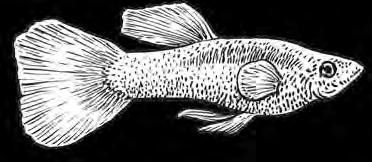
“Even though my studies did not go as planned I feel that because of this I gained a lot of knowledge and experience”
Nico Alioravainen“I have already started to plan and act on the experiments that were suggested”
Billy Tasker-Brown
William travelled to: Turku, Finland to attend the “International Conference on Arabidopsis Research 2018” and present his research entitled “Genes involved in Gynoecium development, recruit cell cycle machinery”.
developments, Arabidopsis research is still pioneering and exciting” says Billy.
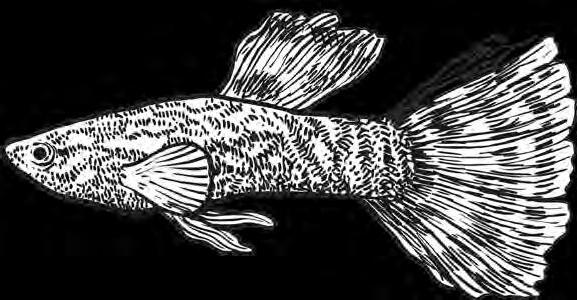
“ The establishment of symmetry in organs and multicellular organisms requires tight spatial and temporal coordination of cell division, cell differentiation and cell expansion. The Arabidopsis gynoecium undergoes an interesting and rare symmetry switch during development, from the bilateral ovary to the radially symmetrical style. Two bHLH transcription factors, SPATULA (SPT) and INDEHISCENT (IND) control auxin dynamics and the cell cycle in order for the symmetry transition to take place. In a SPT IND double mutant, a failure to make the transition to the radial style results in sterility. Remarkably, misexpression of IND and SPT in a bilateral leaf can cause the leaf to be fully radial, demonstrating that these genes are master regulators of radiality. My hypothesis is that downstream of these transcription factors the cell division plane is oriented in order to make this symmetry transition possible. I am studying cell division by visualising microtubules in order to understand whether the cell division plane is controlled by the auxin maxima at the gynoecium apex”, explains Billy.
“ The International Conference on Arabidopsis Research (ICAR) 2018 was held in the city of Turku, Finland. The conference fully displayed the diversity of research conducted on the model organism, Arabidopsis thaliana . We are now in an era where the latest technology can be utilised in polyploid crop species such as wheat, yet despite these
“All three keynote speakers: Prof. Alison Smith, Prof. Dominique Bergmann and Prof. Tetsuya Higashiyama, were excellent. Alison Smith kick-started the conference with an engaging talk on starch degradation in the leaf during the night: Arabidopsis plants degrade all of their starch perfectly during the night whether the day is 4 hours long or 12 hours long. Amazingly plants can anticipate that a night will be longer (i.e. when Alison’s lab turn off the lights 4 hours early) by slowing down the rate of starch degradation.
D ominique Bergmann also gave a stimulating talk on the stomatal lineage, a powerful system to study protein function and evolution. Her group has been pioneering several techniques such as single-cell RNAseq and a BioID based method in order to better characterise cell identity and capture the nuclear proteomes of different stages in the stomatal lineage. Professor Higshiyama wrapped up the conference with a fascinating talk discussing new technologies developed in his lab including a group of photostable fluorophores (prex710), a new version of the clearsee protocol for whole-plant fluorescence imaging and a new

photoactivated nuclei stain called Kakshine. He neatly demonstrated this technology by writing ‘kakshine’ using root nuclei.
I also attended two inspiring workshops, one on microscopy techniques and one entitled ‘Communicating Science in the age of fake news: broadening your impact’. The former introduced different microscopy techniques including light sheet microscopy and two-photon microscopy; the latter involved a brainstorming session about how to better reach the public in the post-truth era.
T here were also some fantastic social events that prompted some great interactions with other scientists. The welcome reception was held in an excellent local brewery, where the food was only topped by the beer. The next day we took a trip out to a tiny island, Loisokari, where a BBQ had been laid out for us and the final conference dinner was held in the town fire station, a memorable venue!
My poster, entitled ‘Cell division plane orientation during symmetry establishment ’, prompted some productive discussions with Prof Michael Lenhard and Prof Tom Beeckmann, among others. I was given some enlightening feedback, and drew inspiration from some of the other posters there. I have already started to plan and act on the experiments that were suggested including a simple drug assay, and a method that measures cell wall thickness to determine the most recent cell division planes.
A ll together this conference was a brilliant opportunity for all who attended. It fostered a collaborative atmosphere within the Arabidopsis community and I got to meet and discuss my project with various eminent scientists.”
Left Nico Alioravainen Photo credit: Maria Rajakallio Right William Tasker- BrownAntarctica was an unlikely place for me to visit considering I’m a plant molecular biologist and physiologist with an interest in agriculture…and perhaps even more unlikely given I treat the cold as a personal affront! And yet, I found myself signing up to spend three weeks on a ship travelling round Antarctica with nearly 80 other women in science for company.
or me, the opportunity to connect with so many inspiring women, to develop my personal and professional skills, and to visit the world’s last remaining wilderness, was too good to pass up. So, I filled my suitcase with thermals, said a fond farewell to my pet plants and travelled to Ushuaia to board the ship and sail south.
I did this as part of Homeward Bound, a year-long leadership initiative that culminates in a three-week intensive program in Antarctica. Running over successive years, the aim is to build a global network of 1000 women in STEMM (Science, Technology, Engineering, Mathematics and Medicine) who can influence policy and decision making as it shapes our planet. I was fortunate to be selected as part of the second cohort of women and to receive travel grants from the Company of Biologists and the SEB Plant Section to support my participation. My employer, CSIRO, was also very supportive and partially funded my participation.
We were a diverse group representing 18 different nationalities and ranging from a first year PhD student to a Nobel prize-winning professor. Although we all had a background in STEMM subjects, we weren’t all academics. We had teachers and social entrepreneurs, doctors, science communicators and self-confessed “policy wonks”. What all of us shared, though, was a passion for the environment, for gender equity, and the belief that we are stronger together.
H omeward Bound seeks to improve the representation of women in leadership positions in STEMM by giving participants personal and leadership development tools, coaching sessions, visibility training and the opportunity to develop meaningful

collaborations. However, for me, it was much more than this. We spent three weeks together, learning, growing and exploring away from our usual support networks, creating a unique, immersive environment where we could collaborate and lead collectively. This experiential learning introduced and reinforced the idea that as women in science we didn’t need to change or be “fixed” in order to lead; instead, we set our own ground rules and created new models and definitions of successful leadership.
Half of each day was spent in workshops during which we extended and deepened our understanding of the course content we had been working on for the year leading up to the voyage. For example, using the Life Styles Inventory, we explored our current thinking and behaviour patterns at work and compared these self-identified styles to the patterns our colleagues had identified in us. We could then choose areas to focus on or develop in order to become more constructive colleagues and leaders. Interestingly, for many of us, this involved changing the way we viewed ourselves rather than changing our behaviour, as we discovered we really were our own worst critics. We also developed personal strategy maps based on identifying our values and priorities in the different areas of our lives: for ourselves, our relationships and our work. I found the focus on values shifted my perspective towards thinking about how I wanted to live more than what I wanted to do. I have begun thinking about specific elements of work that I enjoy and that align with my values, which helps me identify options for a fulfilling career other than the traditional academic path. This is reassuring given the uncertainty of a career in scientific research.
Before, during and after the voyage, we had many opportunities to put our training in visibility and communication to use as we did media interviews and engaged with colleagues around issues relating to gender equity and the environment. On the ship, one of the highlights for many of us was listening to each other present snapshots of our careers and research. Not only did this lead to new potential collaborations but it also highlighted the need and scope for multidisciplinary work to help

solve the large-scale problems we currently face. Melissa Cano, a French postdoc working in the USA, captured some of this thinking when she suggested we teach “problems of the world” rather than individual subjects. It was energising to see the breadth and depth of creativity on board focused on creating a more equitable and sustainable future. In fact, one of the recurring themes was how creative we scientists can be, not just when solving scientific problems. We had visual artists, dancers, yoga teachers and even a milliner on board who generously shared their expertise.
Undertaking all this learning against the stunning backdrop of Antarctica was unique and sometimes distracting, as we spotted whales, penguins and icebergs through the ship’s windows. Fortunately, the other half of each day was spent on land, which gave us plenty of time to explore the beautiful landscapes, take endless photos of ridiculously cute penguins and visit a number of Antarctic bases and research stations.
A ntarctica has no First Peoples and yet the influence of humans was sadly apparent. We heard stories of retreating glaciers from the staff at research stations, saw a penguin with its beak caught in a piece of plastic, and learned about the identification and management of humanintroduced invasive species. Due to Antarctica’s special position as a neutral territory dedicated to peace and science, we came away with a sense that we all have a responsibility to advocate for its care and protection.
Many of us have also returned with new insights and focus for our careers as well as
numerous new friends we can turn to for encouragement and advice. Since returning home several months ago, I have continued to notice changes as I incorporate more of what I learnt into my daily life. I am more conscious of how my values shape what I look for in my work and I have taken conscious steps to create a better working environment for myself and others. Supported by my Homeward Bound connections, I have had the courage to advocate more actively for inclusion and diversity in my organisation and, thanks to my increased visibility, senior leaders and other colleagues are listening. I continue to be inspired and helped by a wonderful network of Homeward Bounders in my city, at work and around the world. I’m excited for the future, to see our network grow and to see friends and colleagues accepted in the third and fourth cohorts.
If this is something you would like to hear more about, please feel free to email me (madeline.mitchell@csiro.au) or visit: www. homewardboundprojects.com.au
Left Madeline Mitchell at Neko Harbour in Andvord Bay Photo credit: Nicole Fetchet Above On board leadership program
SOCIETY FOR EXPERIMENTAL BIOLOGY PRESENTS:
SEB SEVILLE 2019
2–5 JULY 2019
FIBES II CONFERENCE AND EXHIBITION CENTRE
SEBIOLOGY.ORG #SEBAMM

SCIENCE ACROSS BOUNDARIES – CELL,PLANT AND ANIMAL BIOLOGY
ANIMAL, PLANT AND CELL BIOLOGY
• FUNCTIONAL MICRO- AND NANOSTRUCTURES IN BIOLOGY HOST-MICROBIOTA INTERACTIONS
ACROSS ANIMAL AND PLANT KINGDOMS
ANIMAL AND PLANT BIOLOGY
• THREATENED PLANTS AND ANIMALSCAN UNDERSTANDING PHYSIOLOGY INFORM CONSERVATION STRATEGIES?
CELL AND ANIMAL BIOLOGY
• SENSING THE PHYSICAL ENVIRONMENT
• SAVING ENERGY IN A FLUCTUATING ENVIRONMENT: FROM THE WHOLE ORGANISM TO THE MOLECULE
• BRAIN BUILDING: PLASTICITY IN FORM AND FUNCTION OF THE CENTRAL NERVOUS SYSTEM
• FUELLING THE FIRE OF LIFE –EVOLUTIONARY PHYSIOLOGY OF OXYGEN SUPPLY IN VERTEBRATES
CELL AND PLANT BIOLOGY
• TIP GROWTH IN PLANT BIOLOGY
• PLANT EPIGENETICS
• GENERAL CELL AND PLANT BIOLOGY (POSTER SESSION ONLY)
DEVELOPMENTAL PROGRAMMING AND LIFETIME FITNESS
• TRANSGENERATIONAL RESPONSE TO ENVIRONMENTAL STRESS
• DEVELOPMENTAL PROGRAMMING OF ADULT VERTEBRATE PHYSIOLOGY
ENERGETICS: FROM MOLECULES TO ORGANISMS
• HEAT EXCHANGE WITH THE ENVIRONMENT: MECHANISMS AND INSIGHTS INTO ANIMAL ENERGETICS
• HOW DO ANIMALS MANAGE THEIR ENERGY EXPENDITURE?
NEUROMECHANICS AND NEUROPHYSICS
• SENSORY AND MECHANICAL FACTORS UNDERLYING STABLE AND AGILE CONTROL OF LEGGED LOCOMOTION
• HOW BRAINS AND BODIES INTERACT TO GENERATE BEHAVIOUR: NEURONAL PLASTICITY AND BIOMECHANICS
RHYTHMS OF LIFE
• FISH CHRONOBIOLOGY
• REGULATION OF ENERGY METABOLISM IN FISH
• CLOCKS FOR THE CITY: HOW URBAN ENVIRONMENTS SHAPE THE RHYTHMS OF ANIMALS
• FROM GENES TO BEHAVIOUR: ACCLIMATION MECHANISMS WITH POTENTIAL USE AS BIOMARKERS IN DISTURBED COASTAL HABITATS (CELL AND ANIMAL BIOLOGY)
OTHER ANIMAL SESSIONS
• OPEN BIOMECHANICS
• OPEN ANIMAL BIOLOGY
• COMPUTATION IN BIOLOGICAL SYSTEMS
• REDOX REGULATION IN CHLOROPLASTS
• AN EXTENDED PLANT PHENOTYPE: CHARACTERISING PLANT-SOIL MICROBIOME INTERACTIONS
• IMPACT AND FUNCTIONS OF ALTERNATIVE SPLICING IN PLANTS
• STOMATAL AND PHOTOSYNTHETIC REGULATION OF WATER USE EFFICIENCY
• MECHANISMS AND MITIGATION OF PLANT WATER DEFICIT: FROM THE BOTTOM UP
• ABIOTIC STRESS TOLERANCE –FROM THE LAB TO IMPACT IN THE FIELD
• GENE NETWORKS FOR CROP IMPROVEMENT
• IN SILICO PLANTS
• TIME, TEMPERATURE, AND A TRANSFORMING WORLD SEB+
• BIOIMAGING AS A MEANS FOR DISCOVERY AND LEARNING
• INTEGRATING COMMUNICATION AND WORK LITERACIES INTO BIOLOGY EDUCATION
• SCIENCE WITH IMPACT
• CAREER WORKSHOPS
• MEET THE ACADEMICS
PLANT AND CELL BIOLOGY ALGAL MODEL SYSTEMS ON THE RISE: UNDERSTANDING AND EXPLOITING THE ALGAE TO LAND PLANT TRANSITION (30 JUNE 2019)
ANIMAL BIOLOGY FROM MECHANISMS TO MODELS: IS GLOBAL WARMING CAUSING ANIMALS TO SHRINK? (30 JUNE 2019)
SESSION TOPICS WILL INCLUDE: